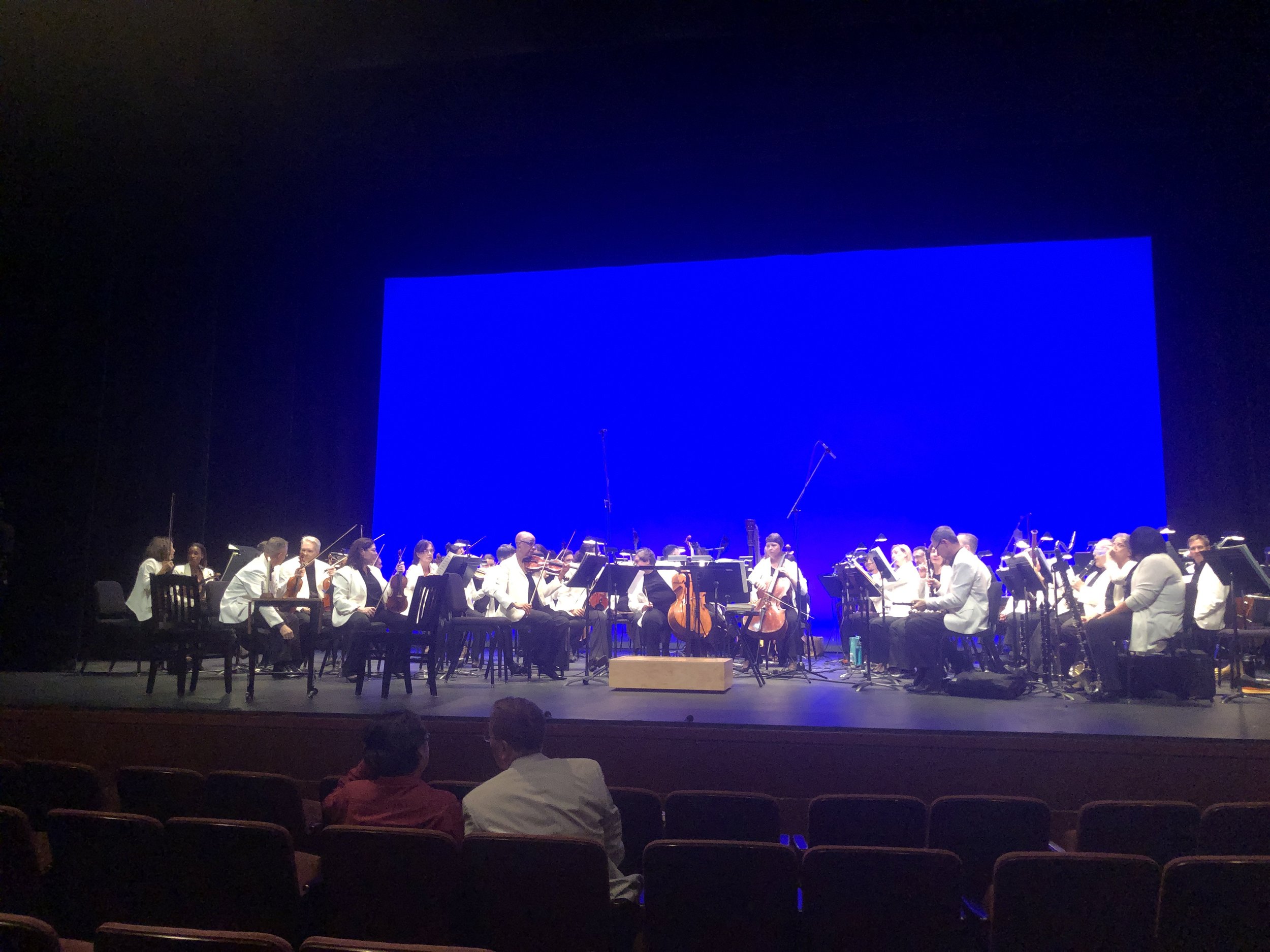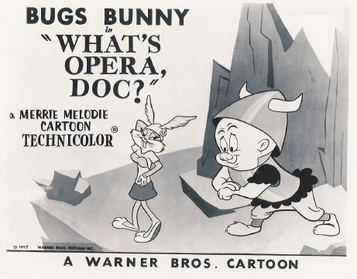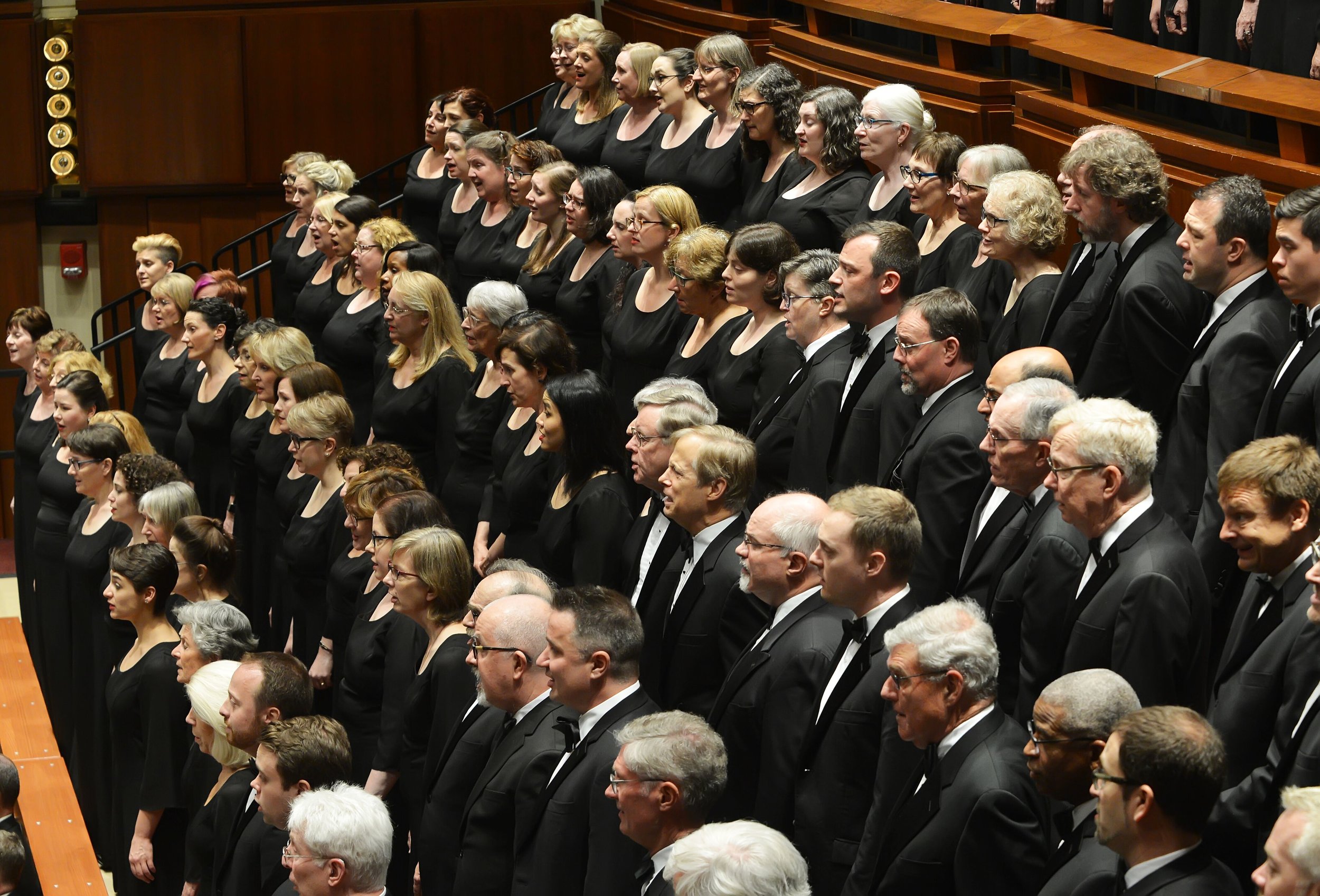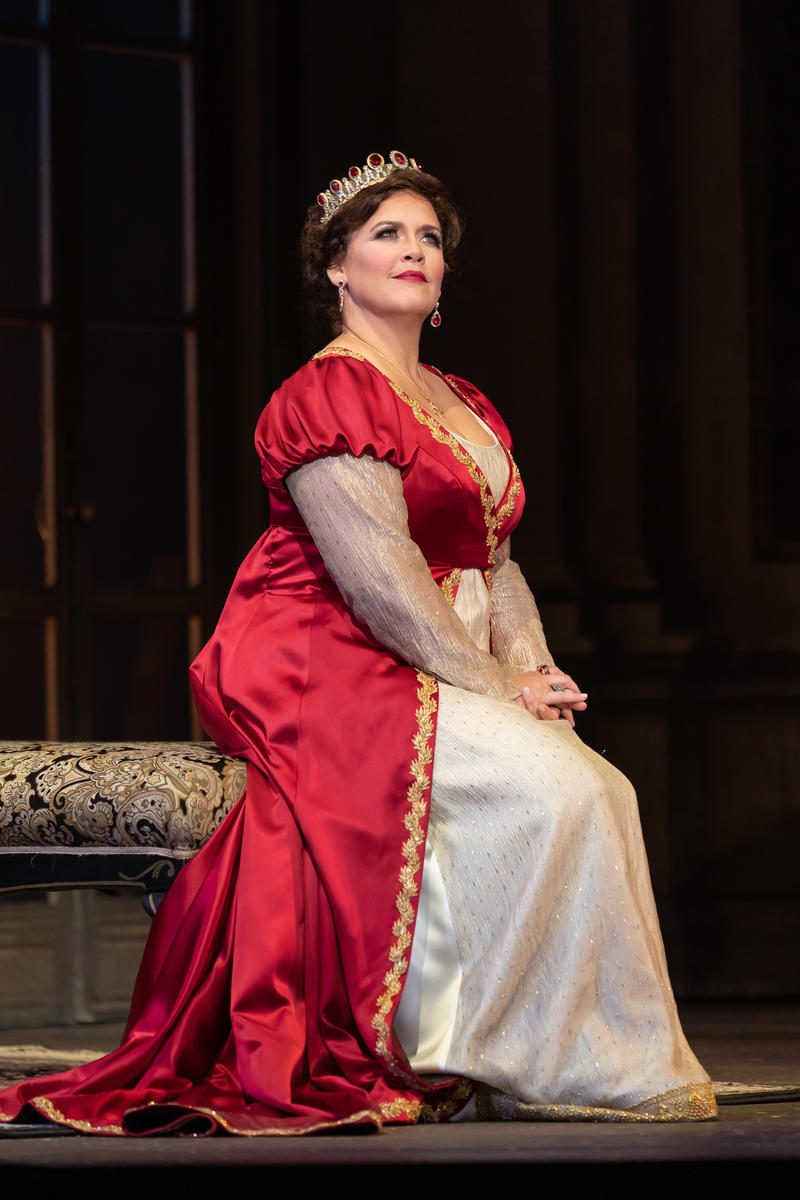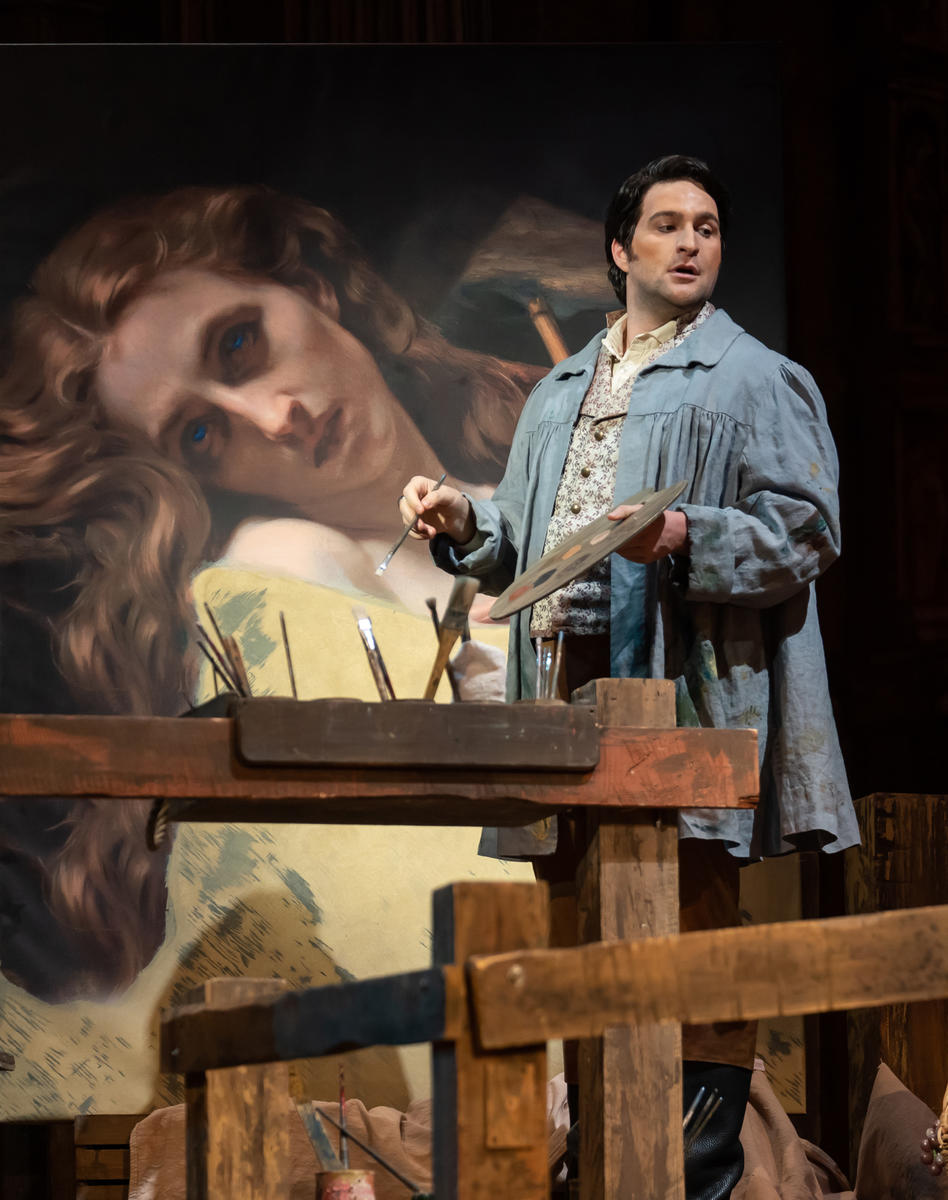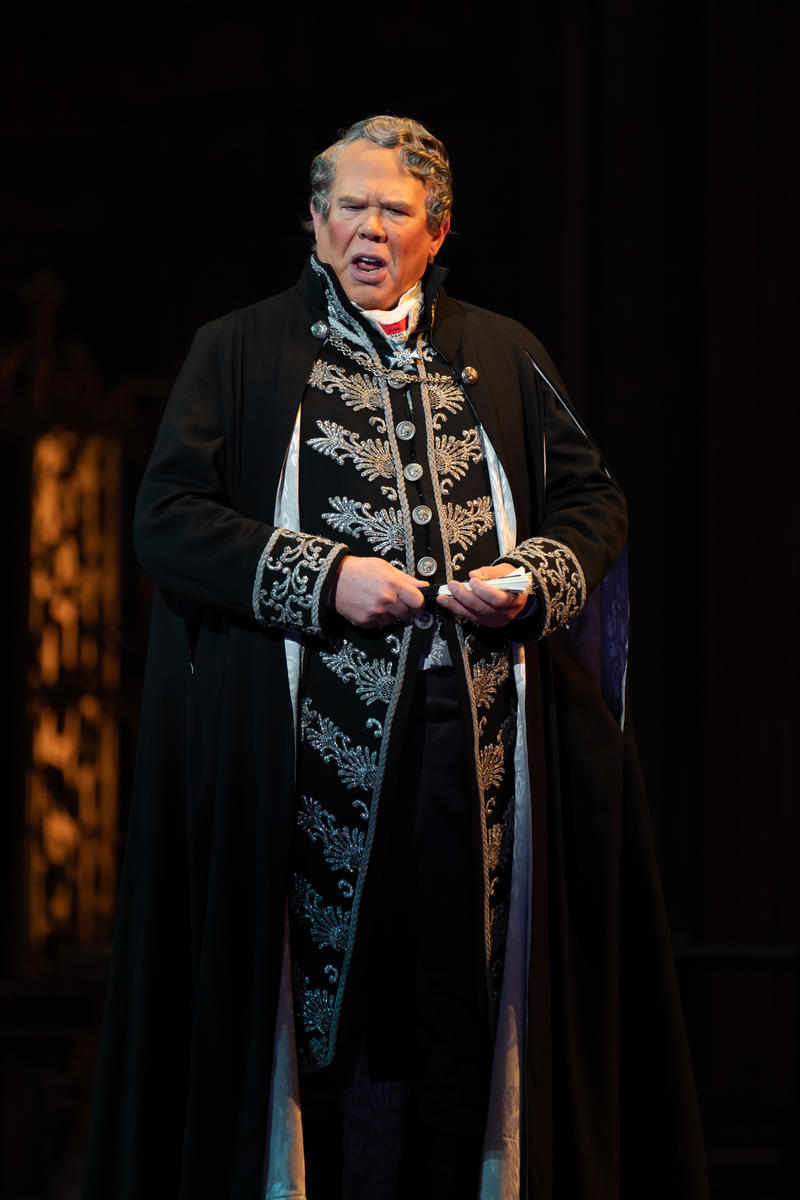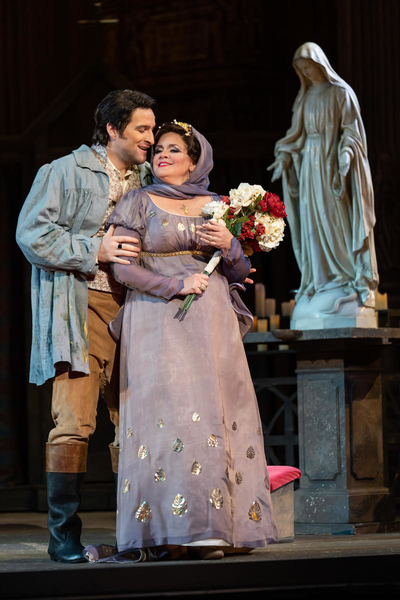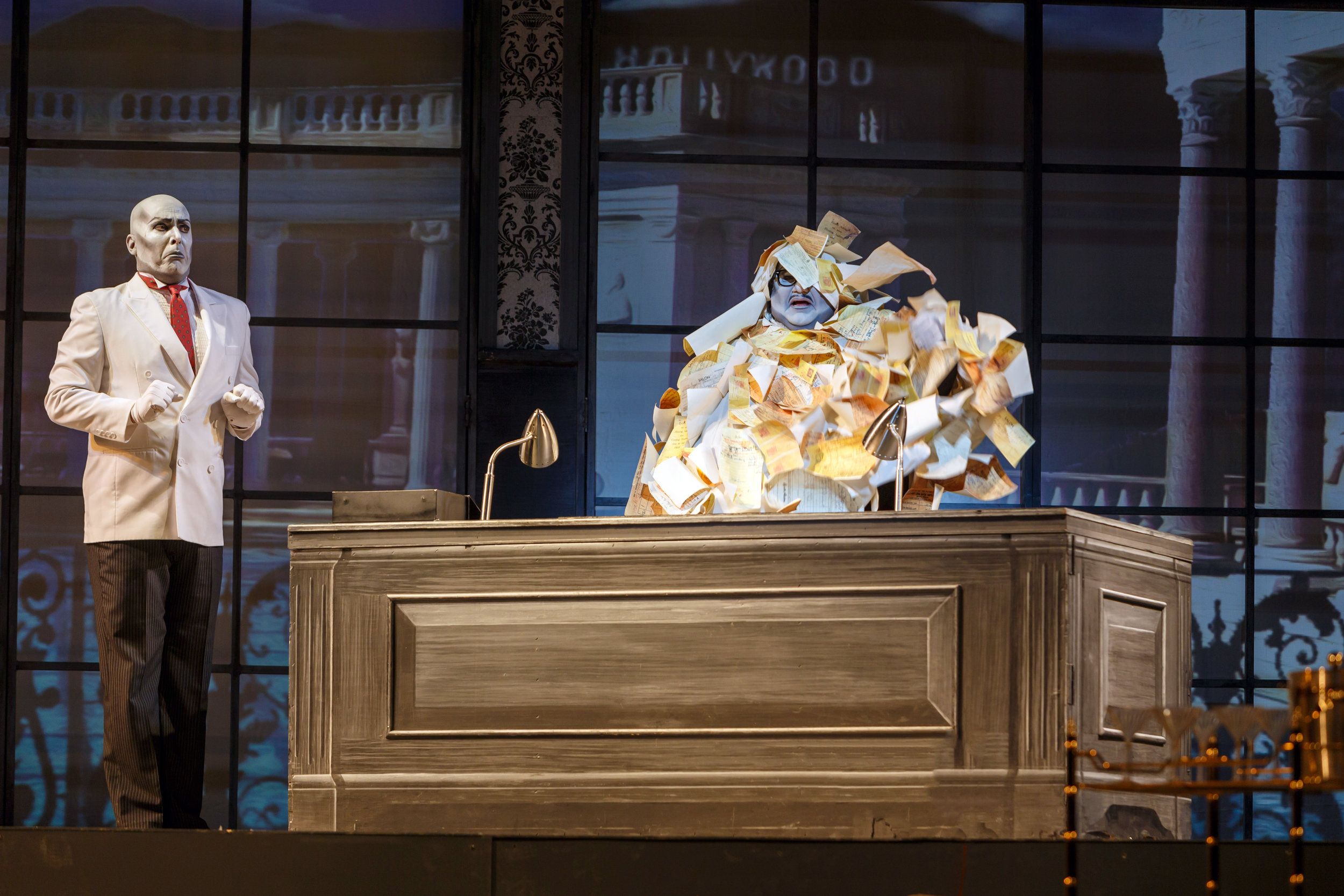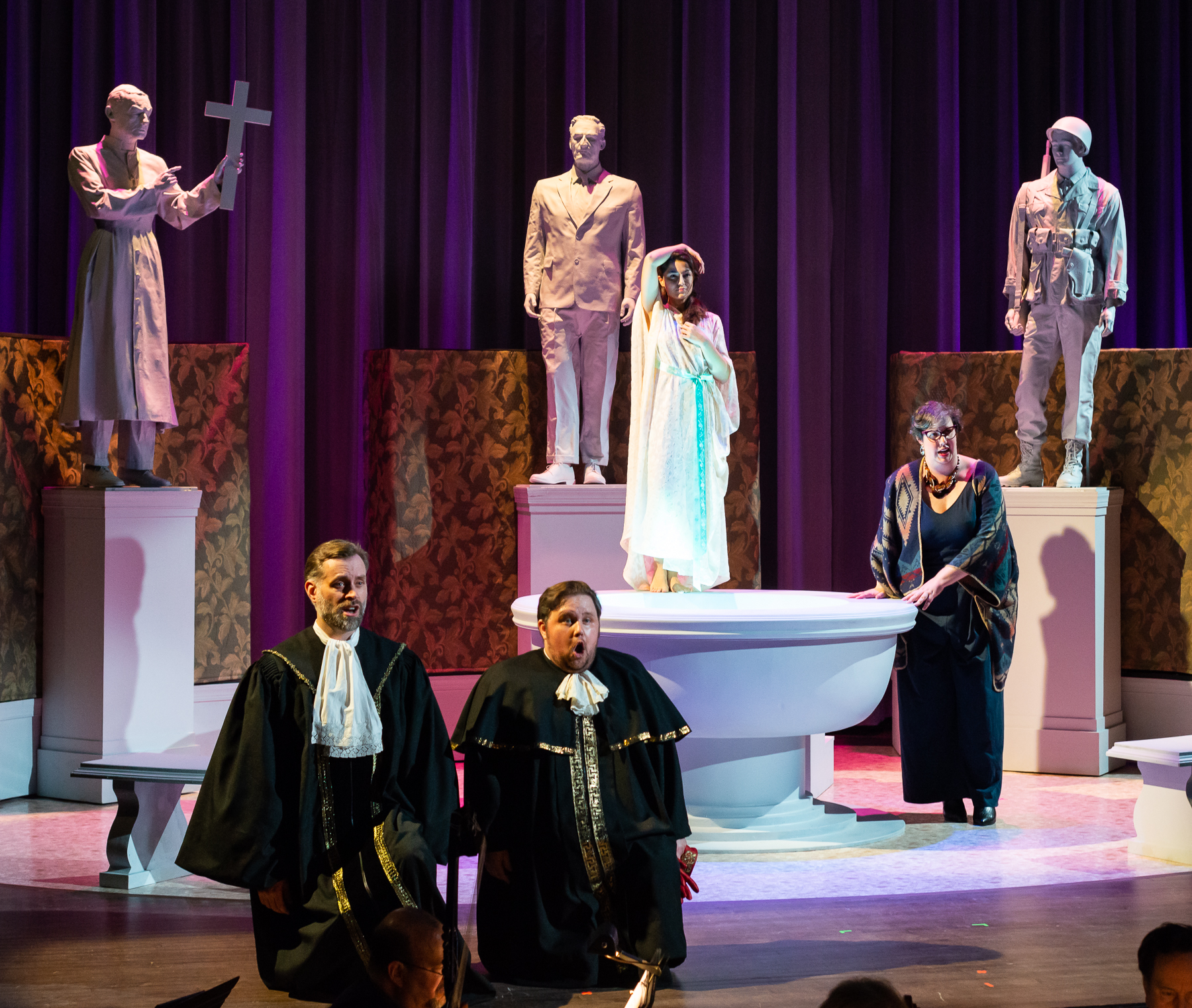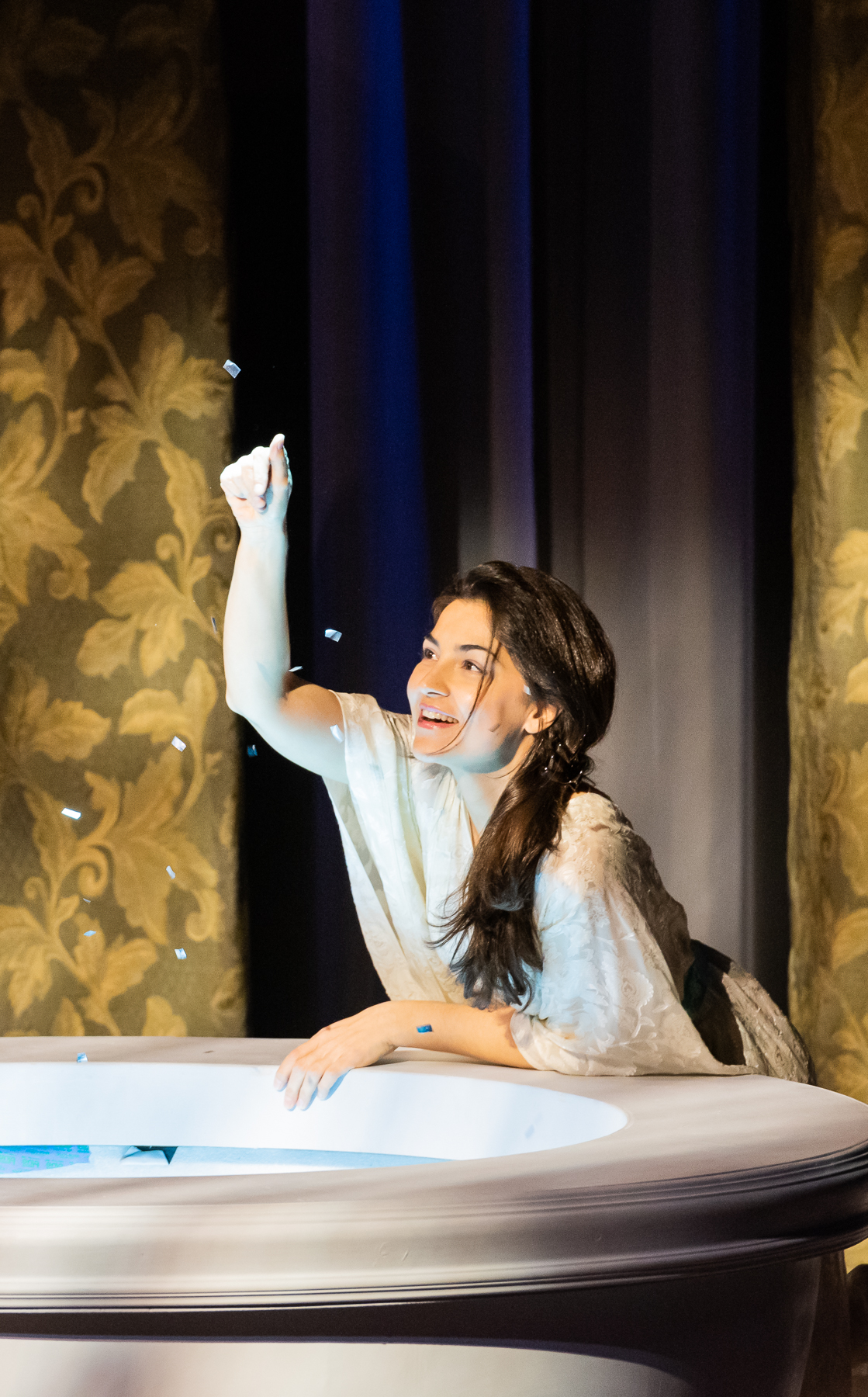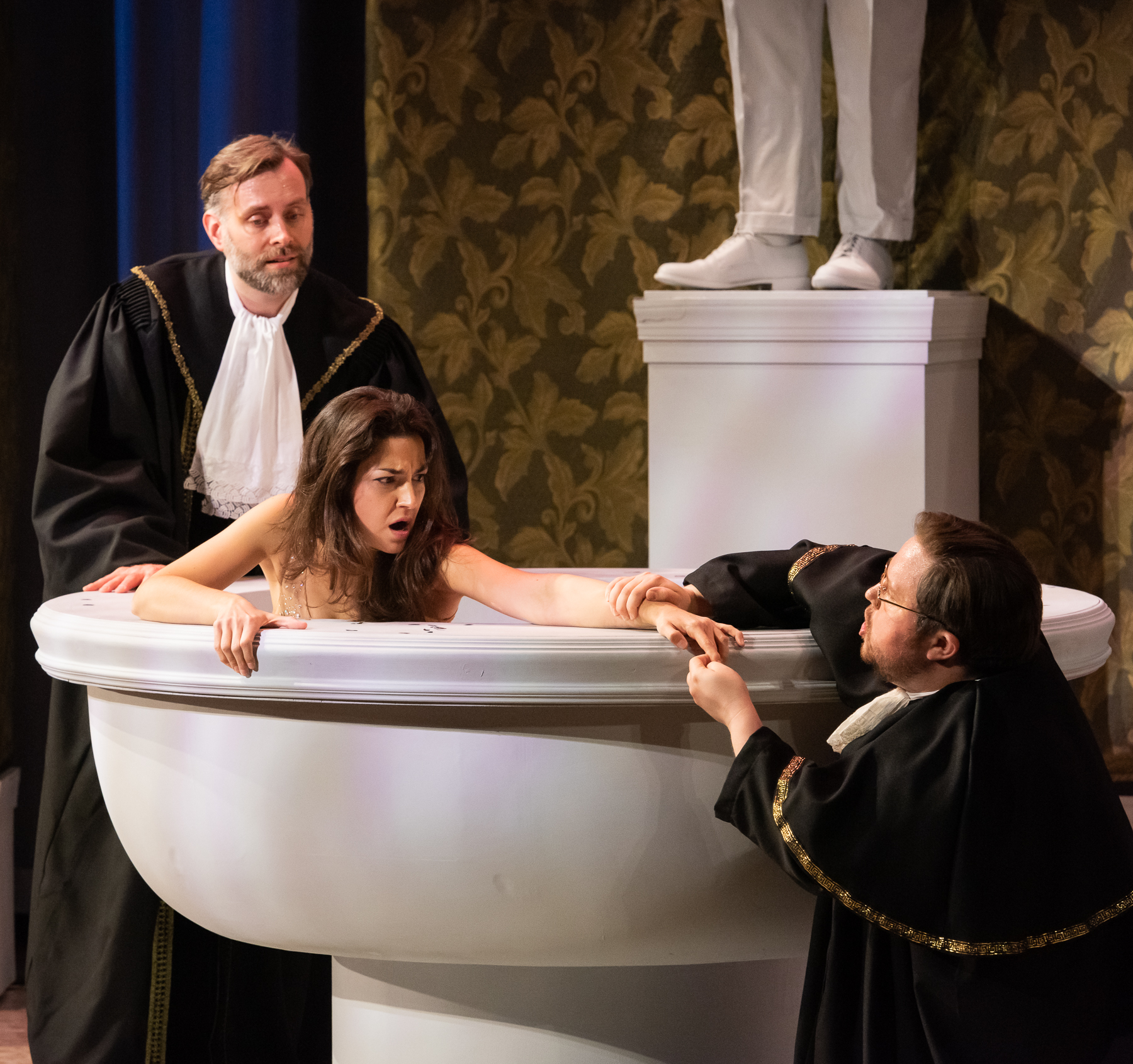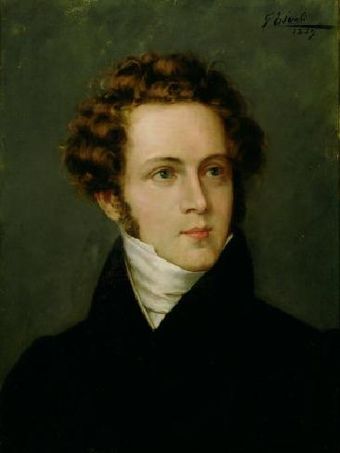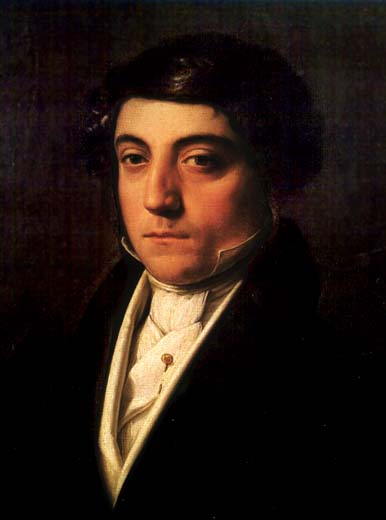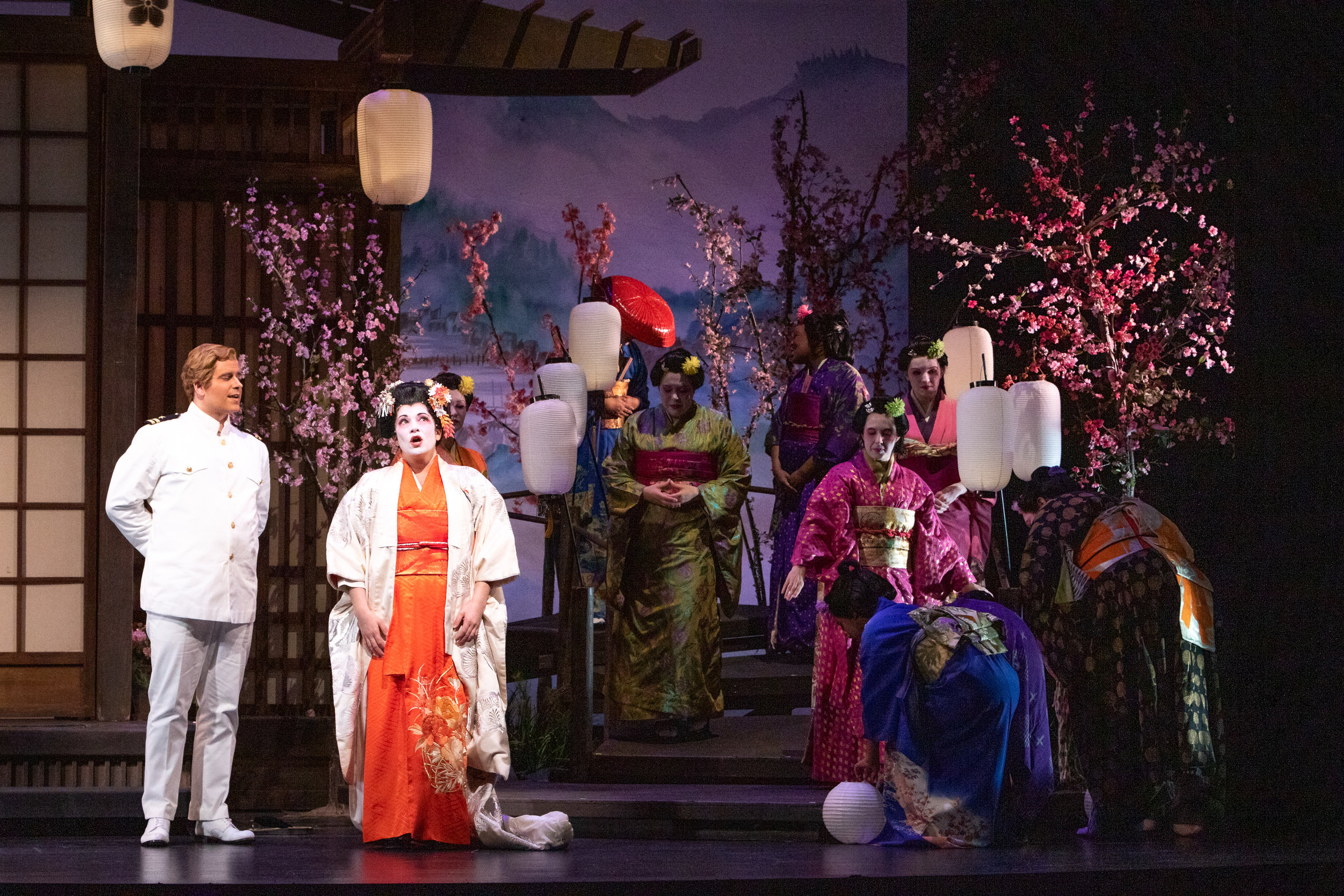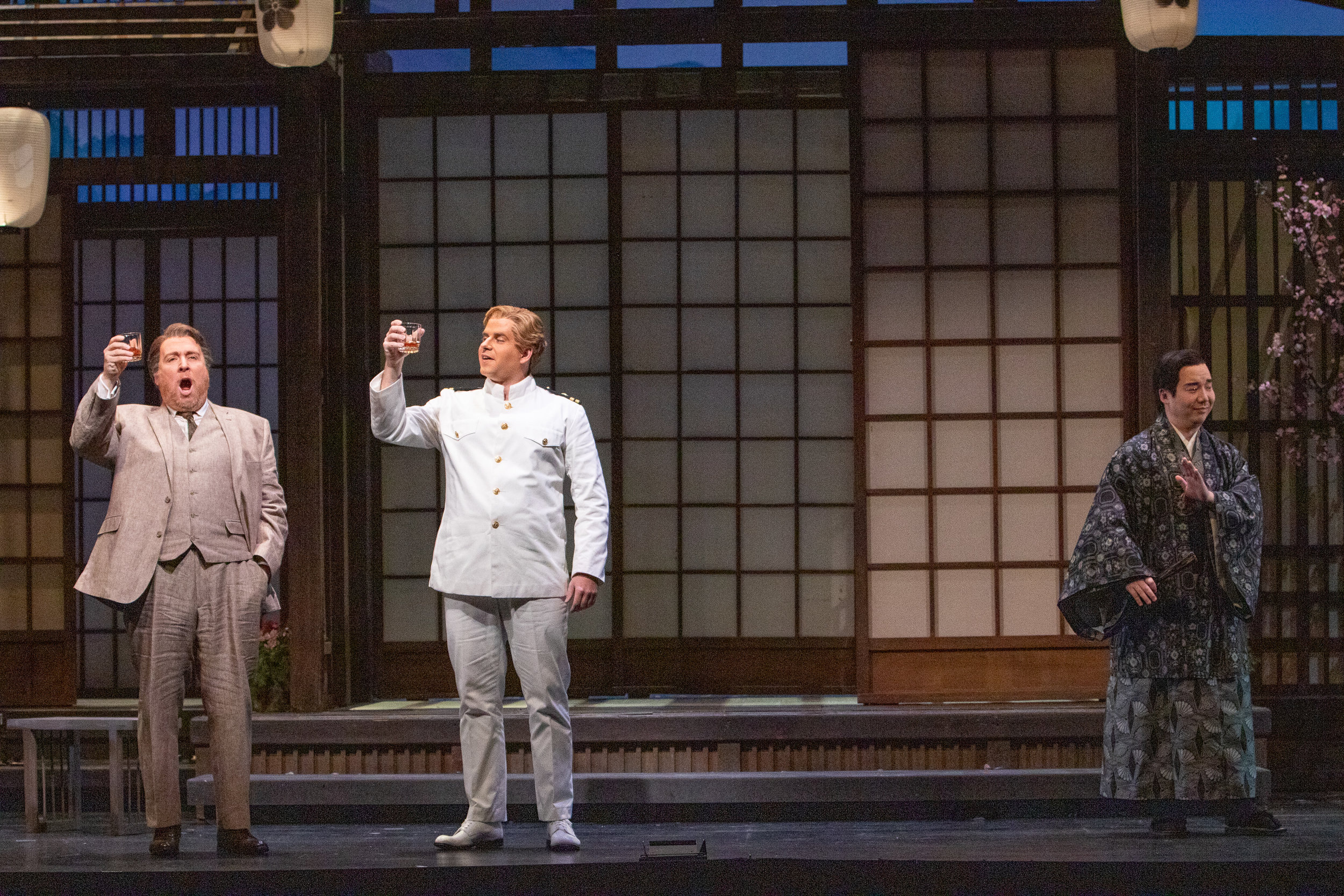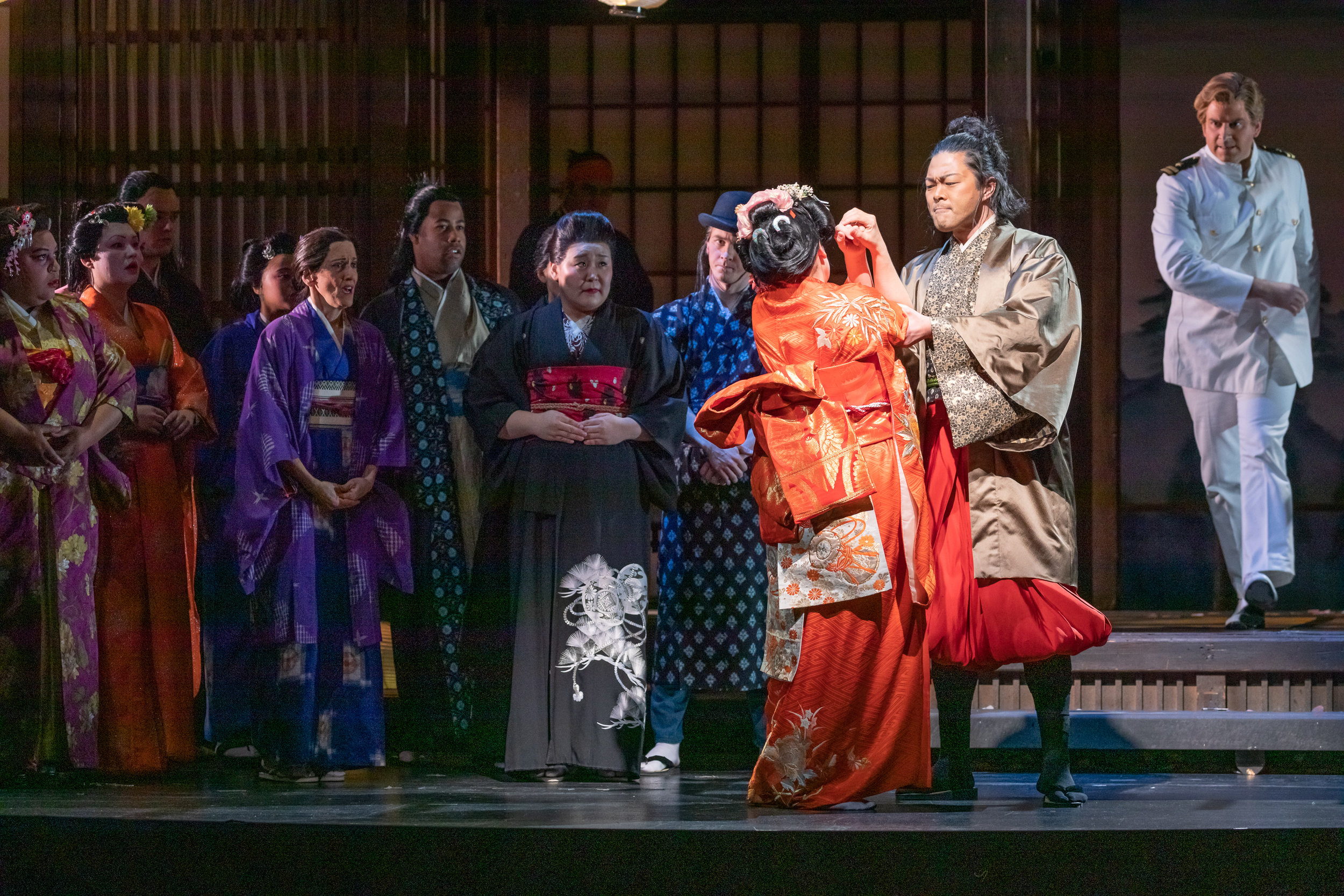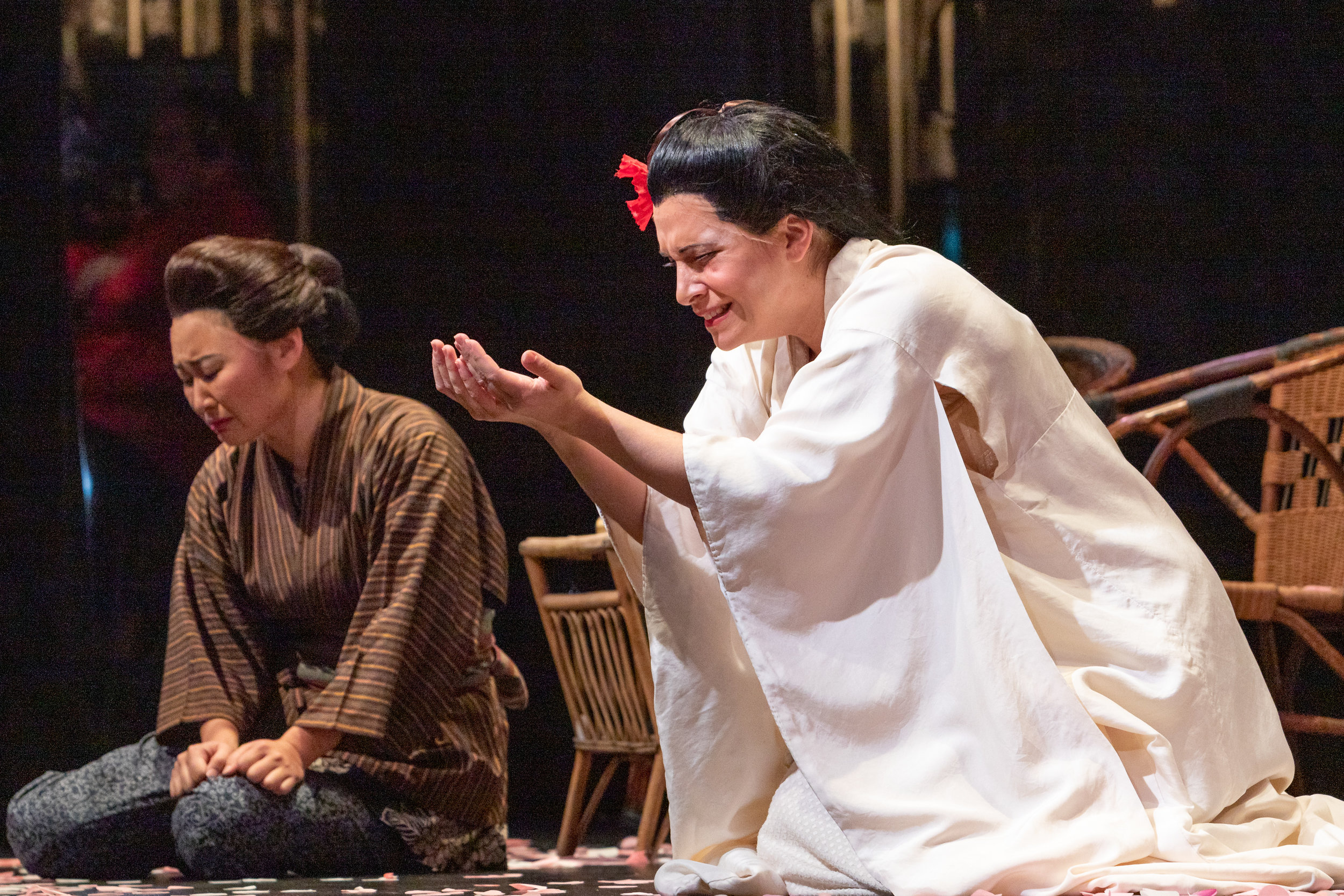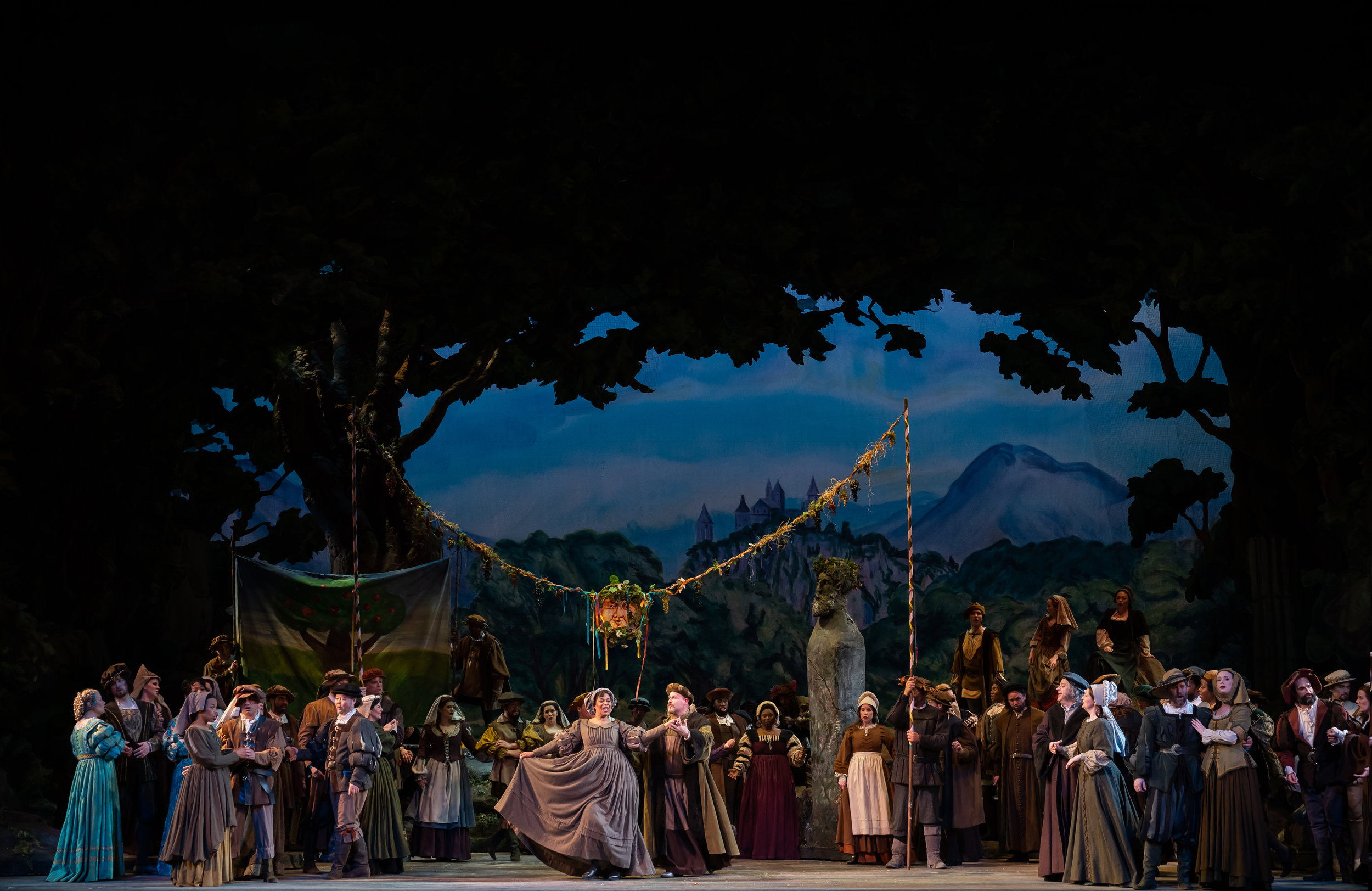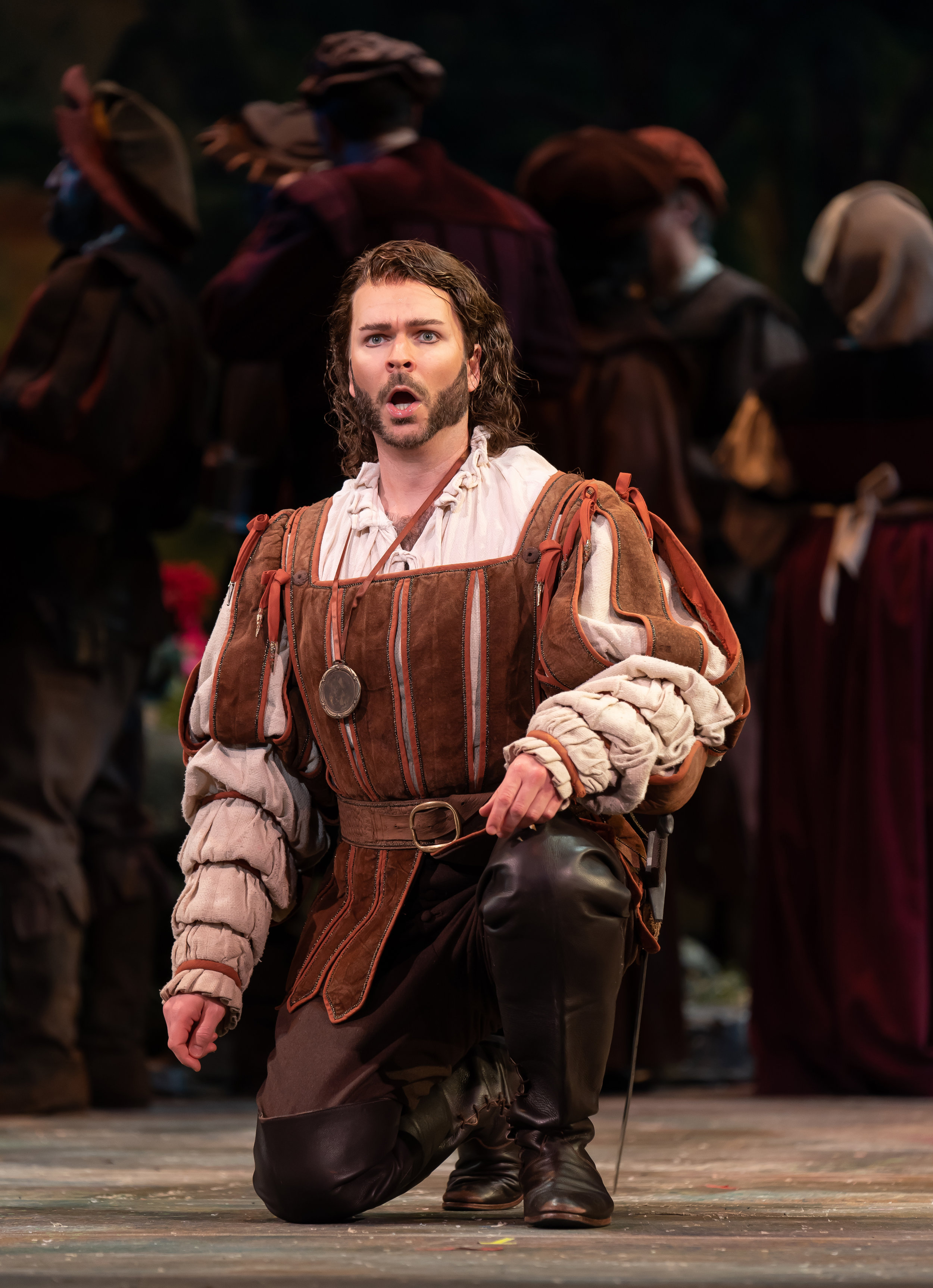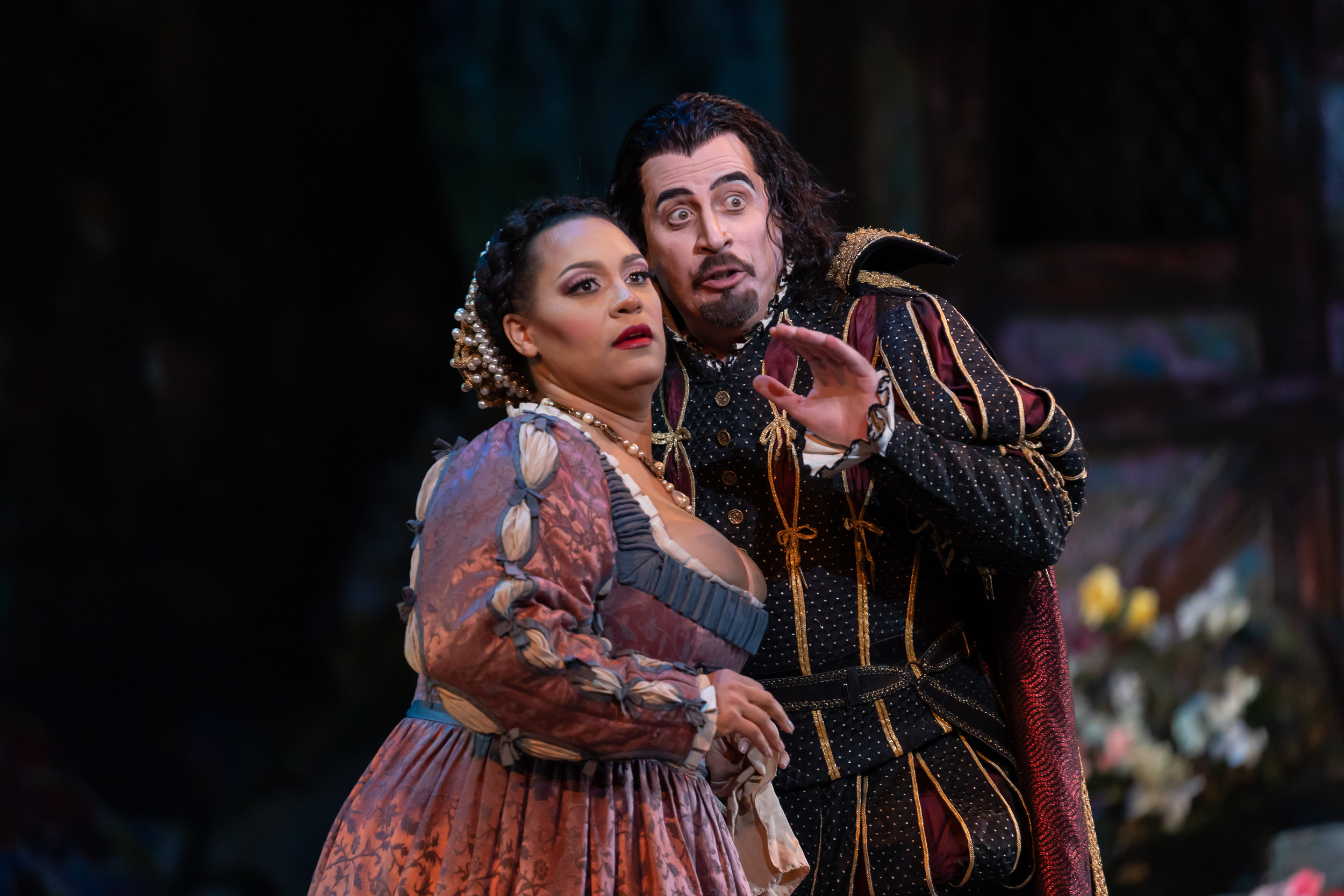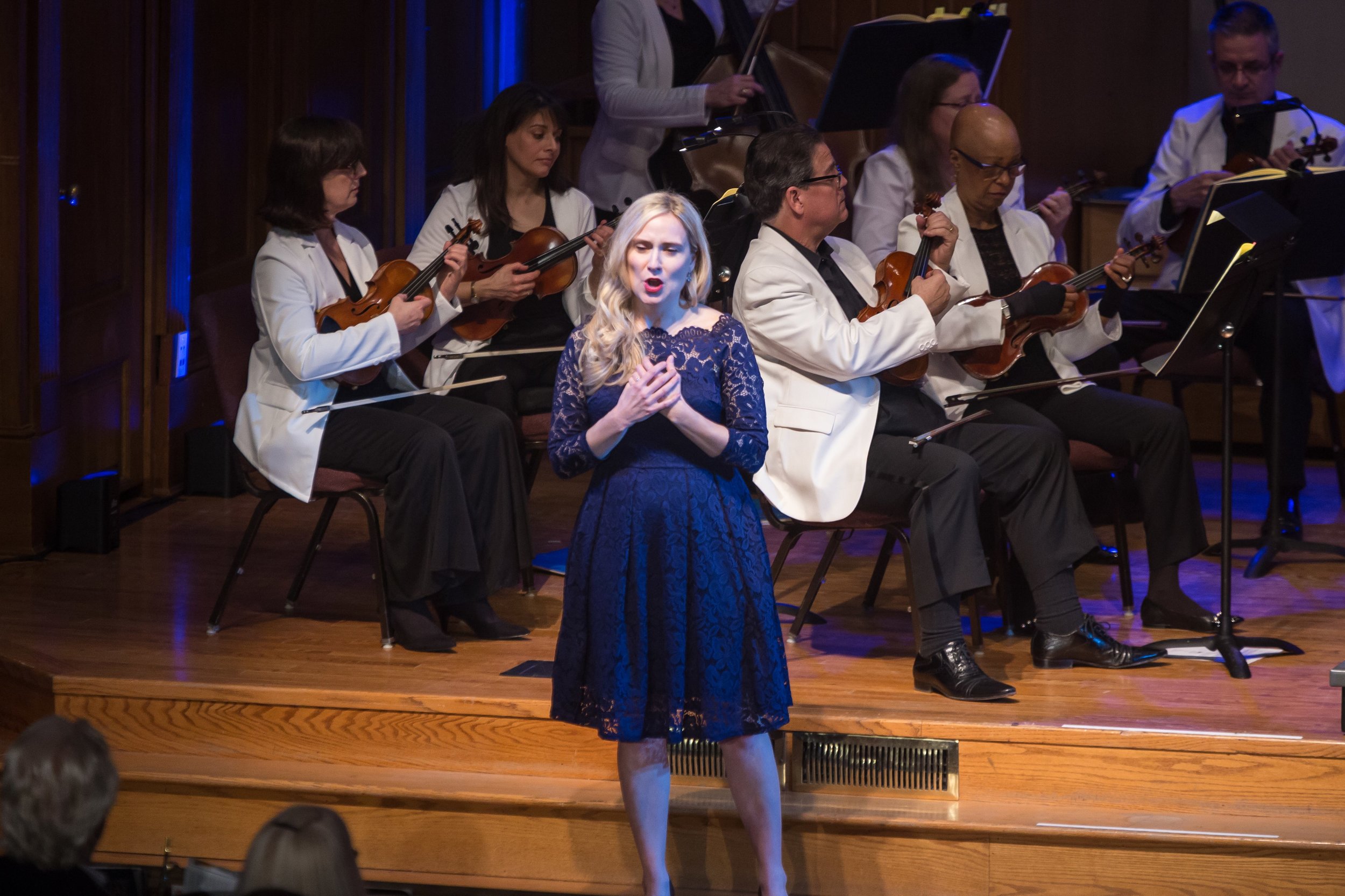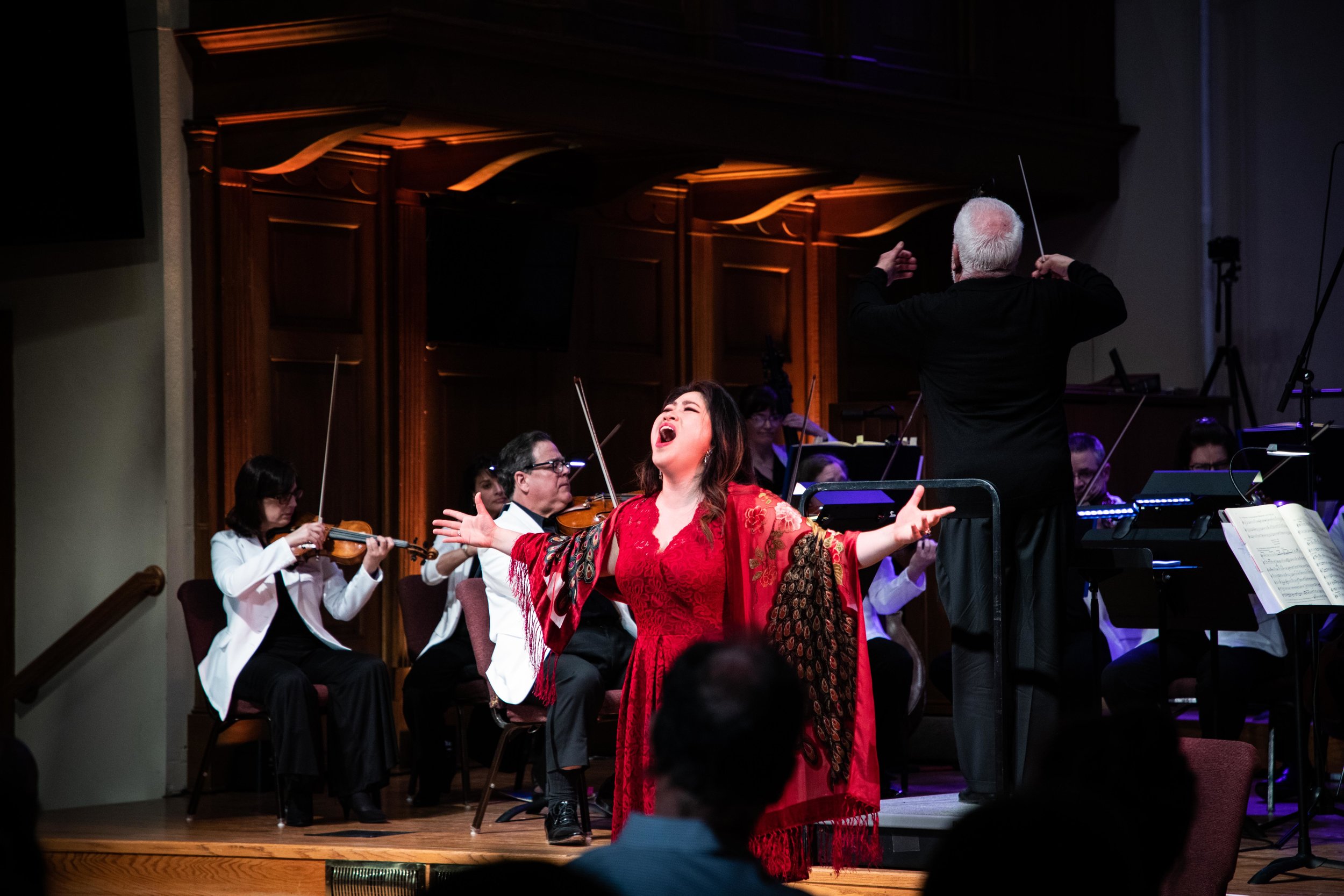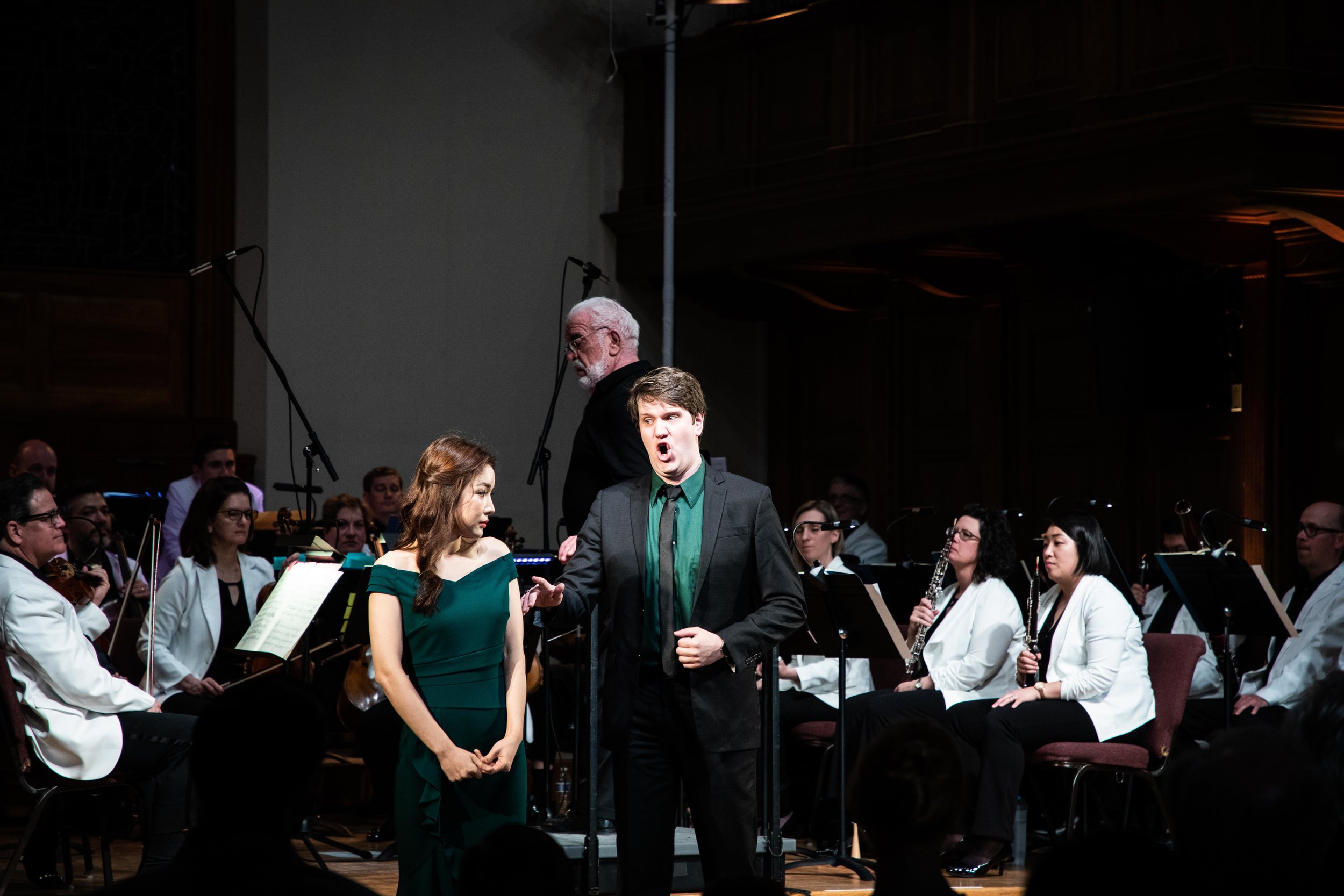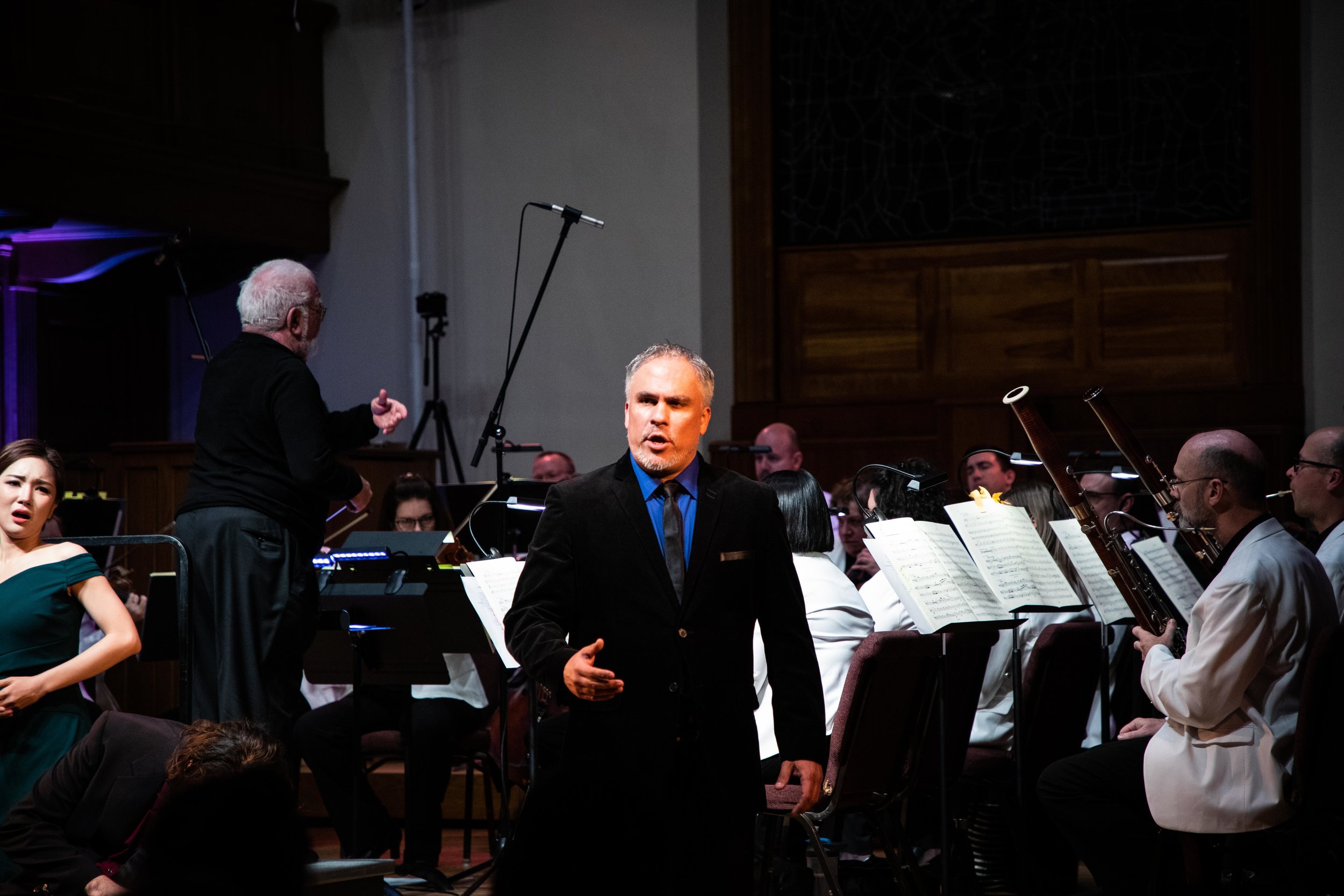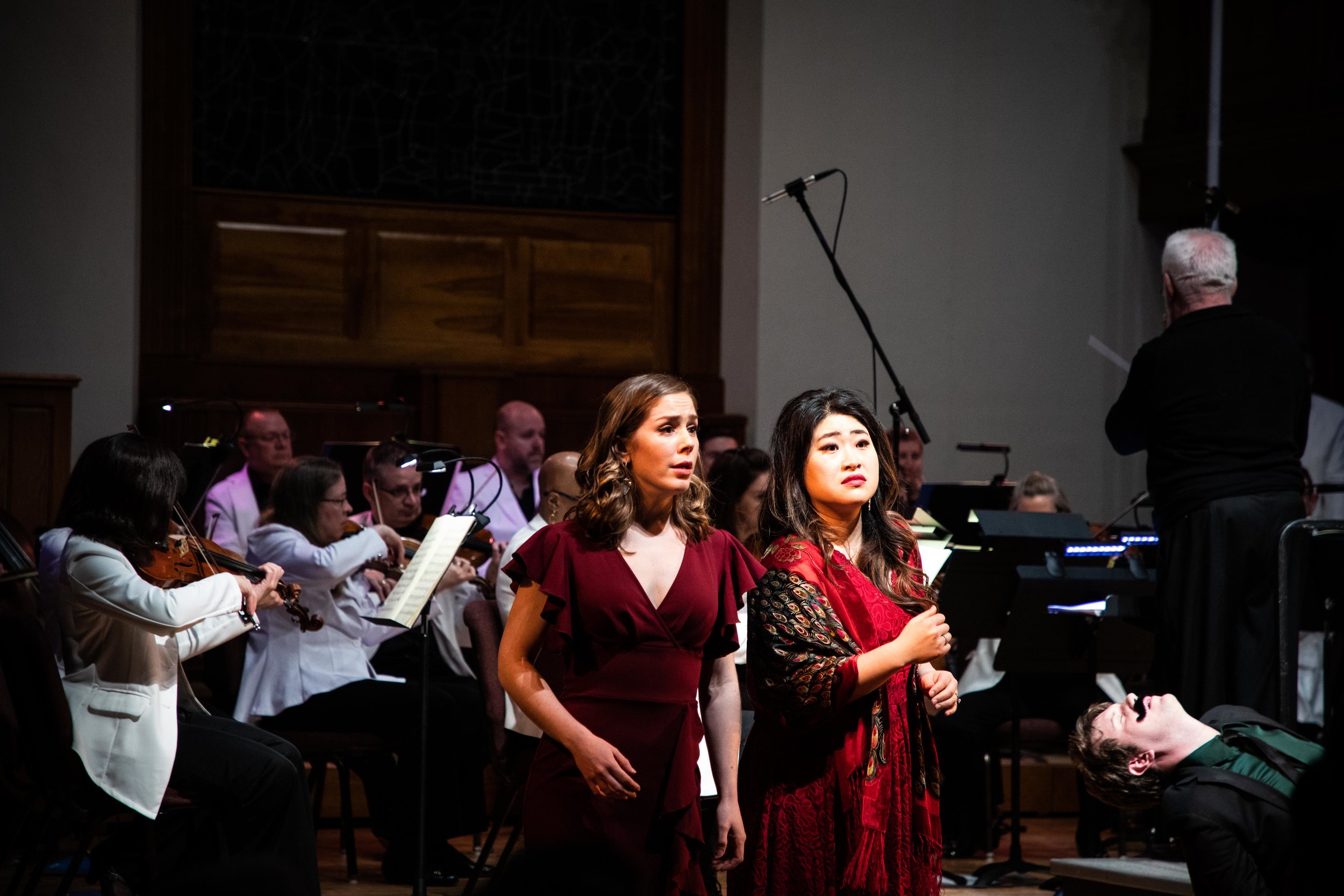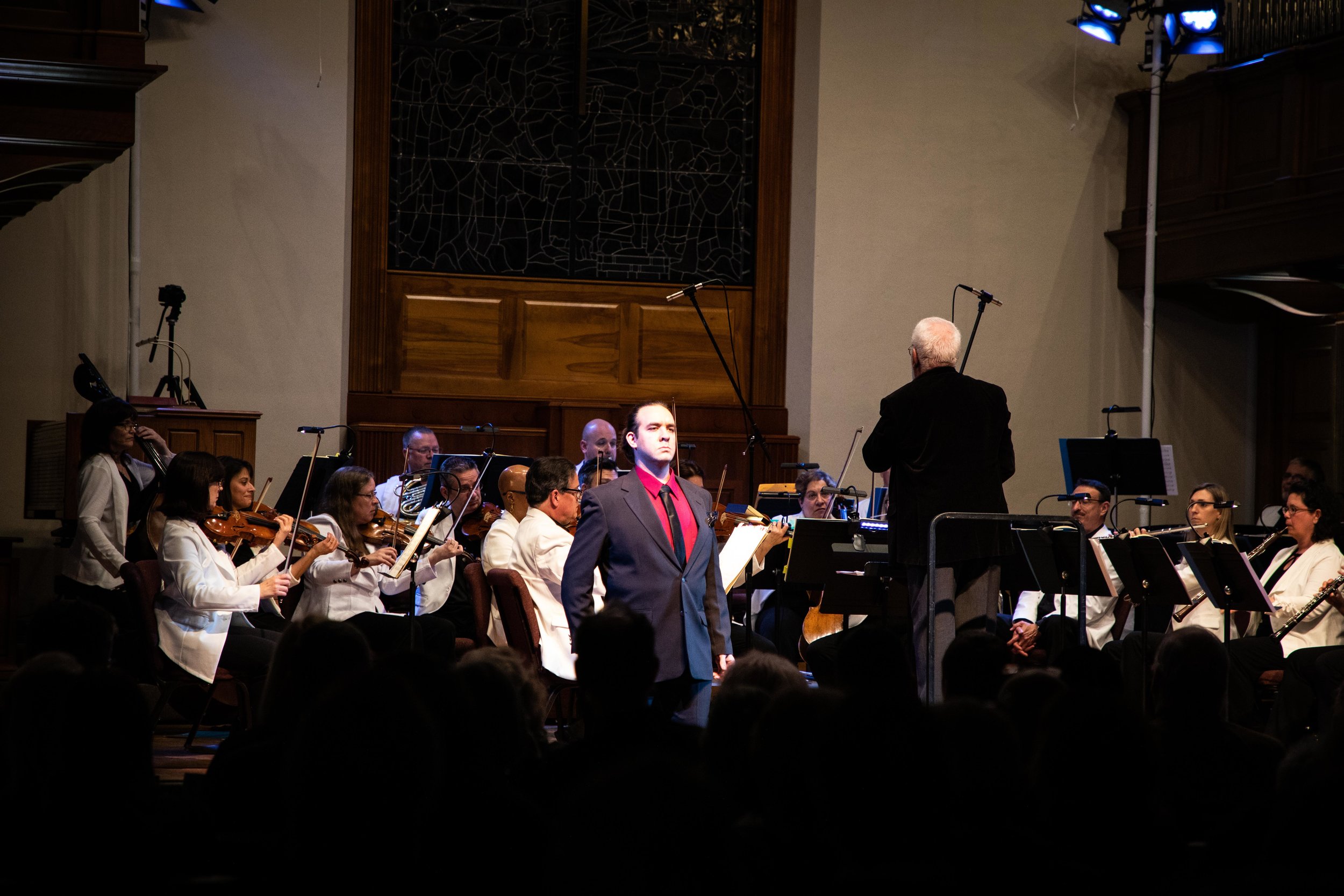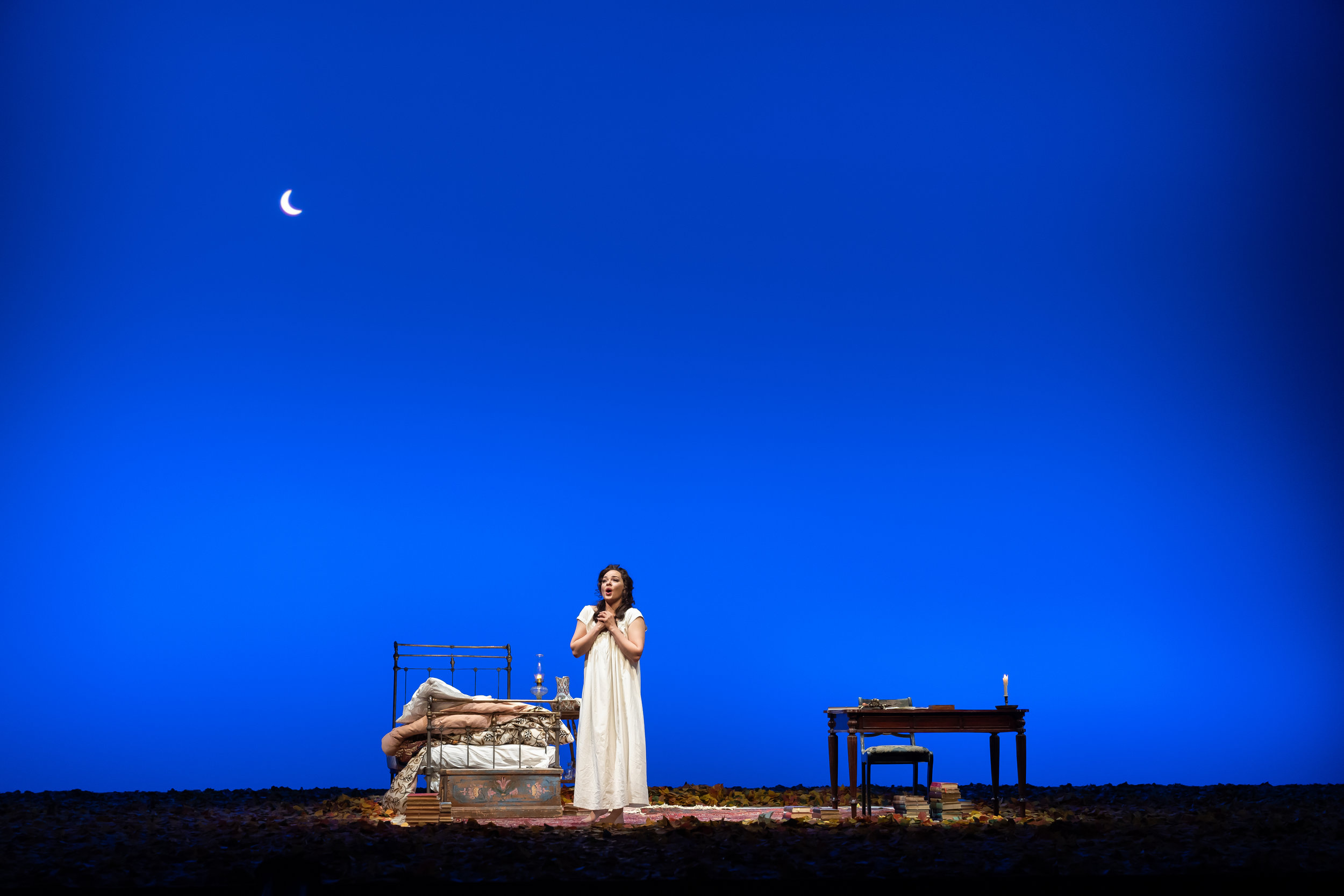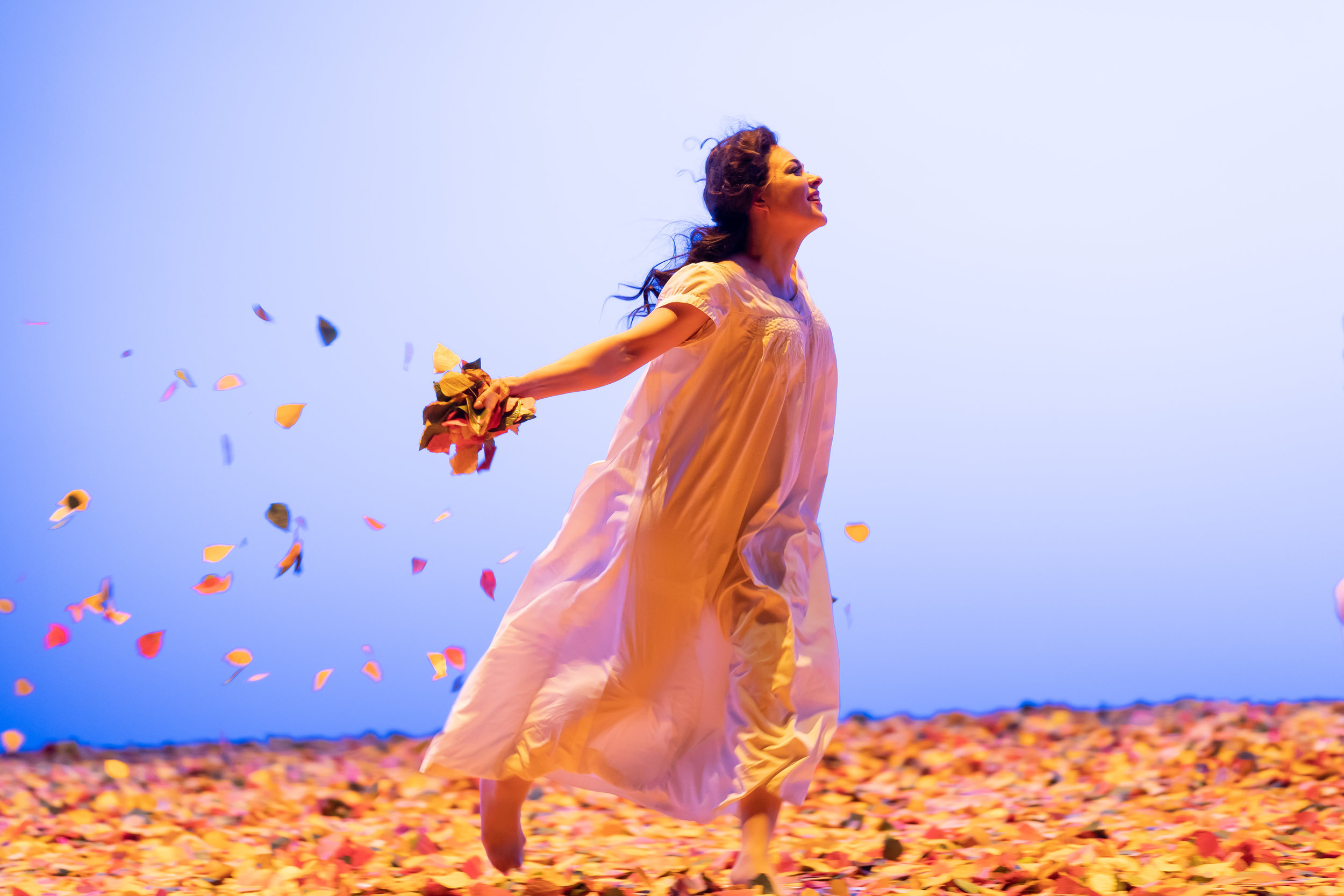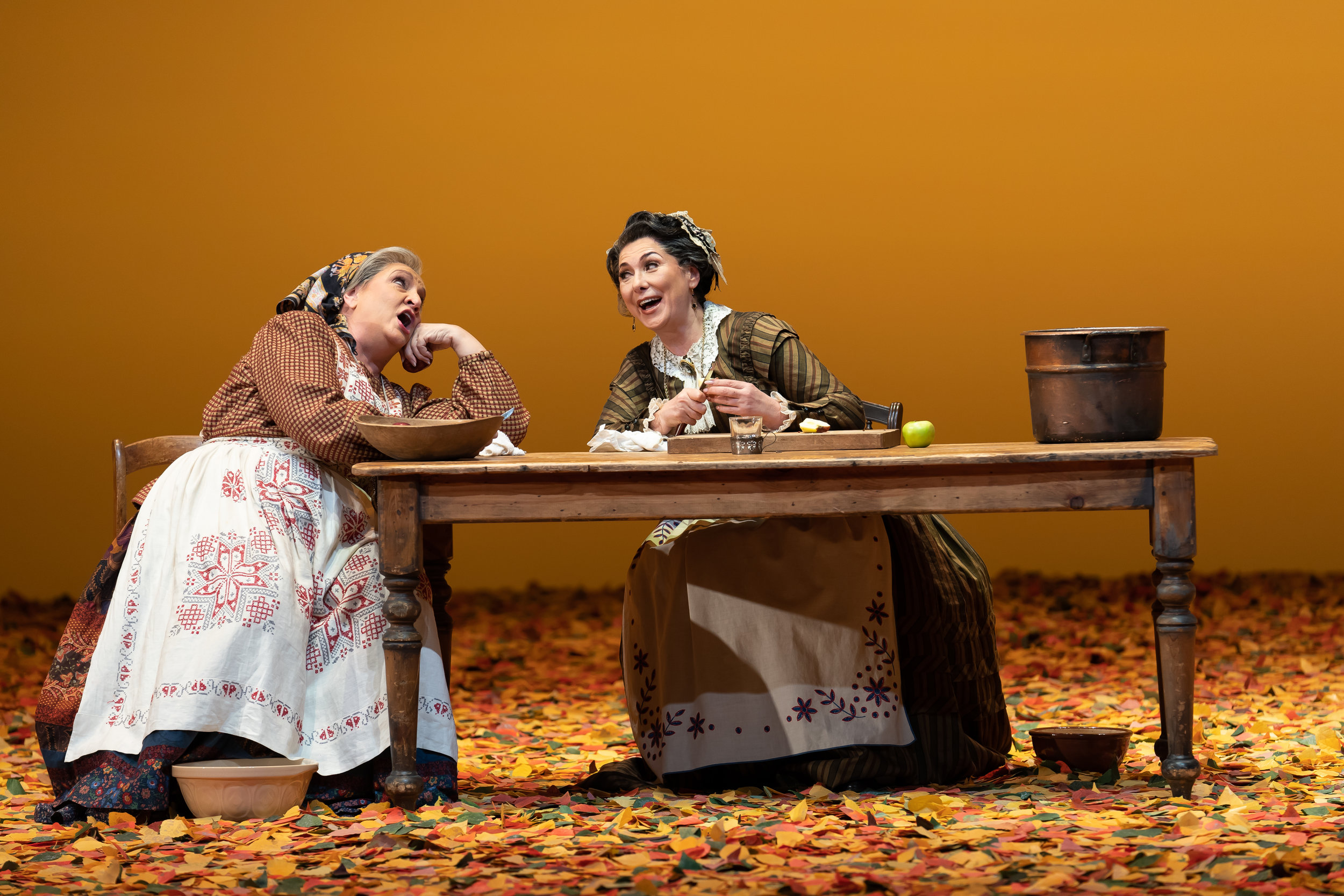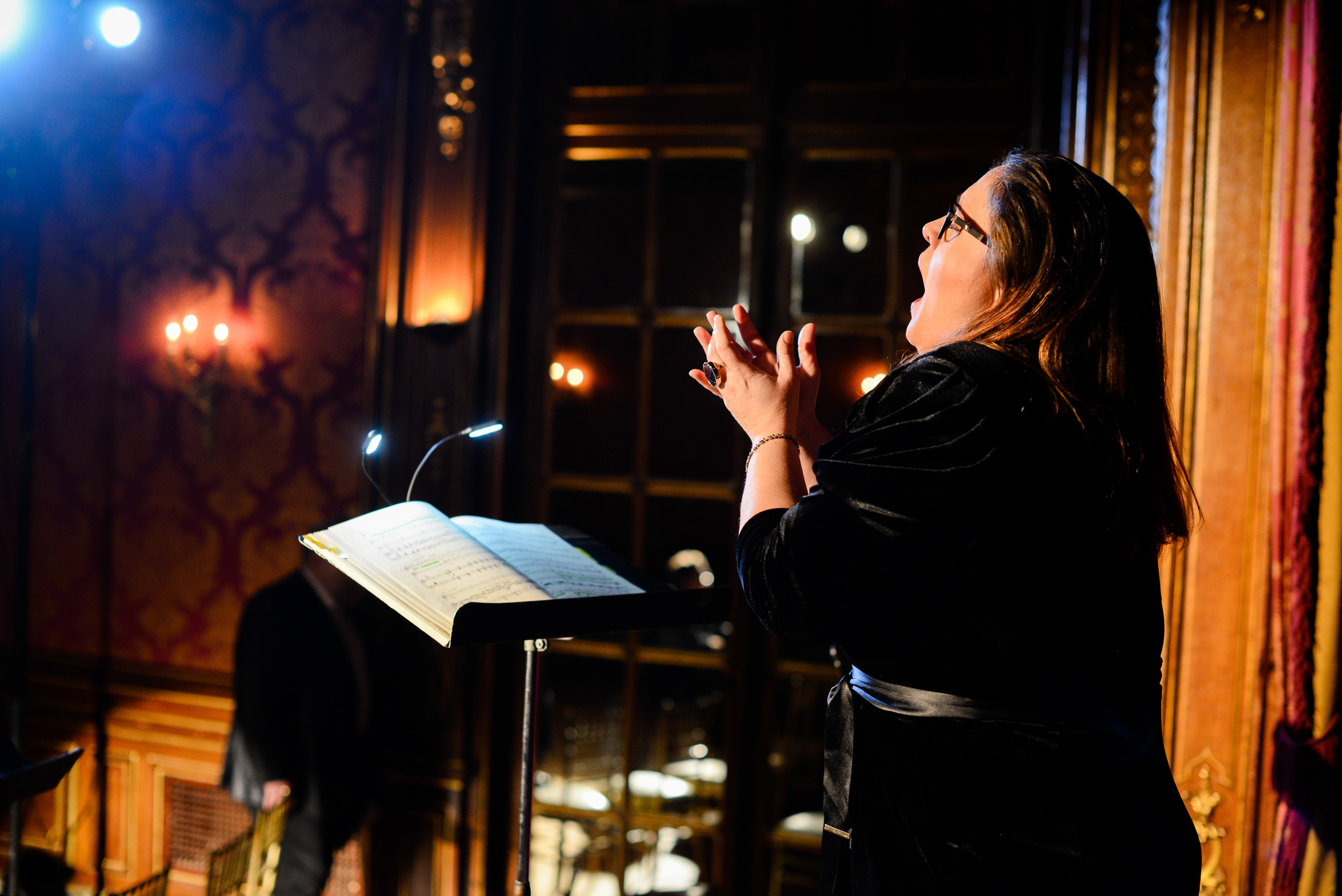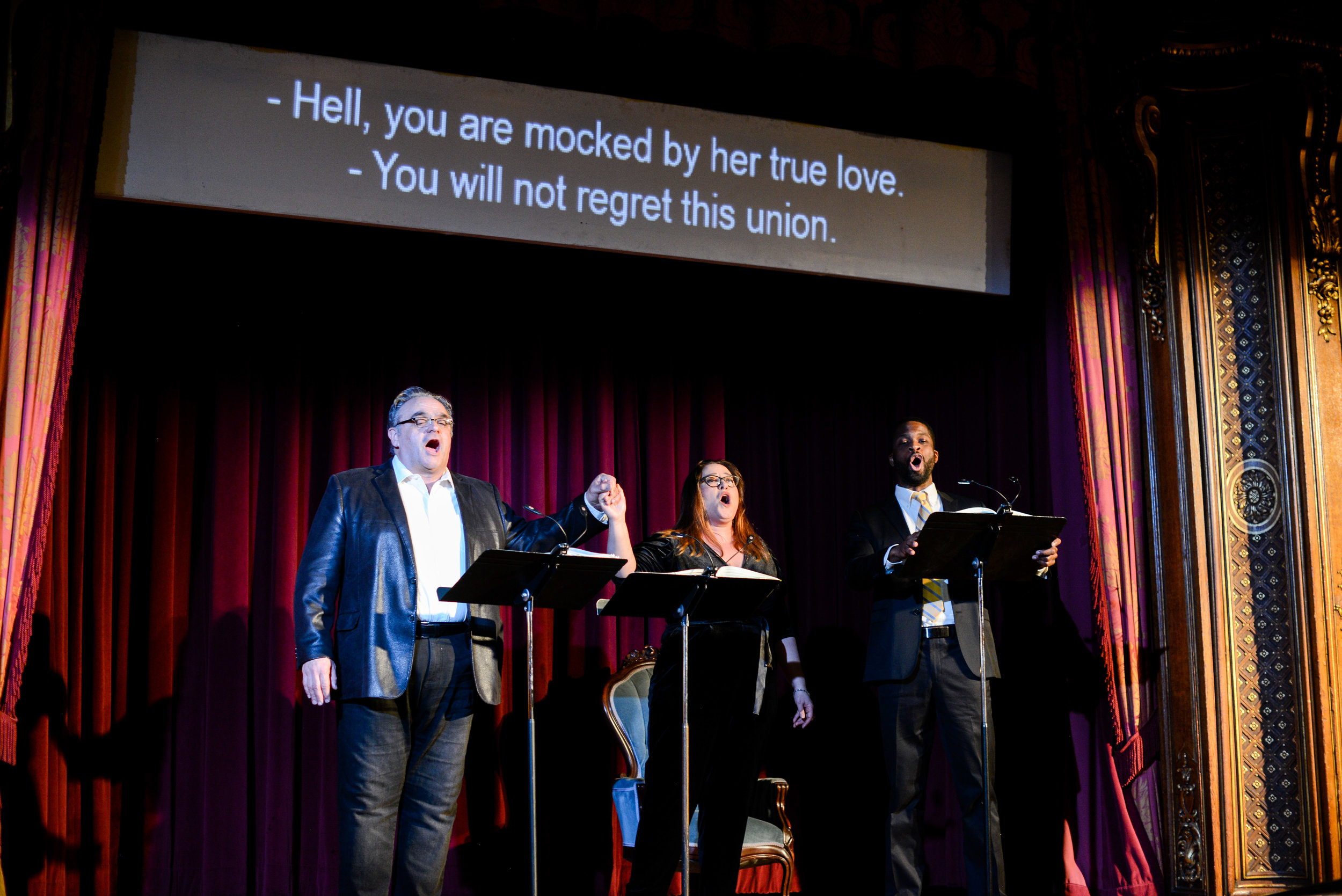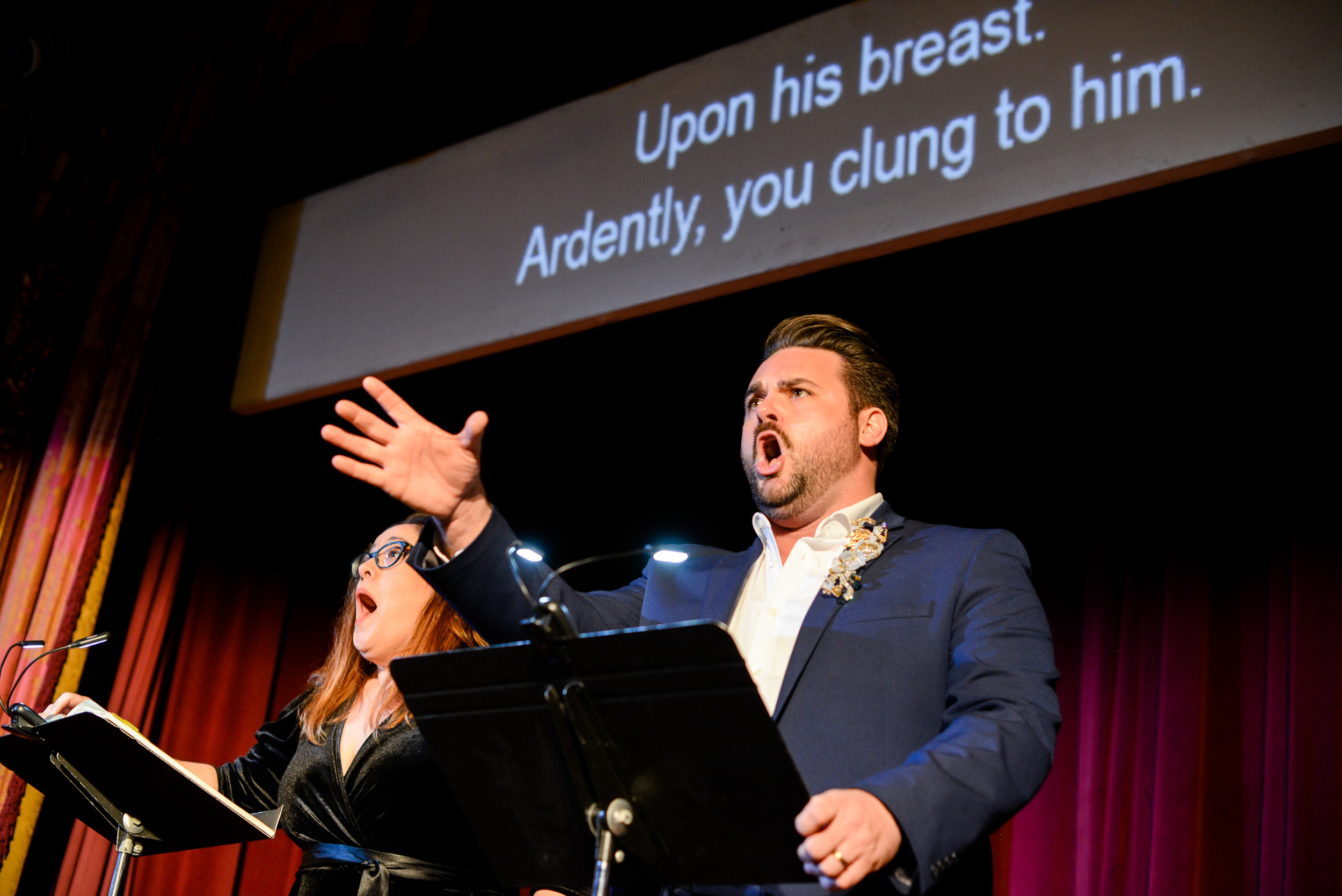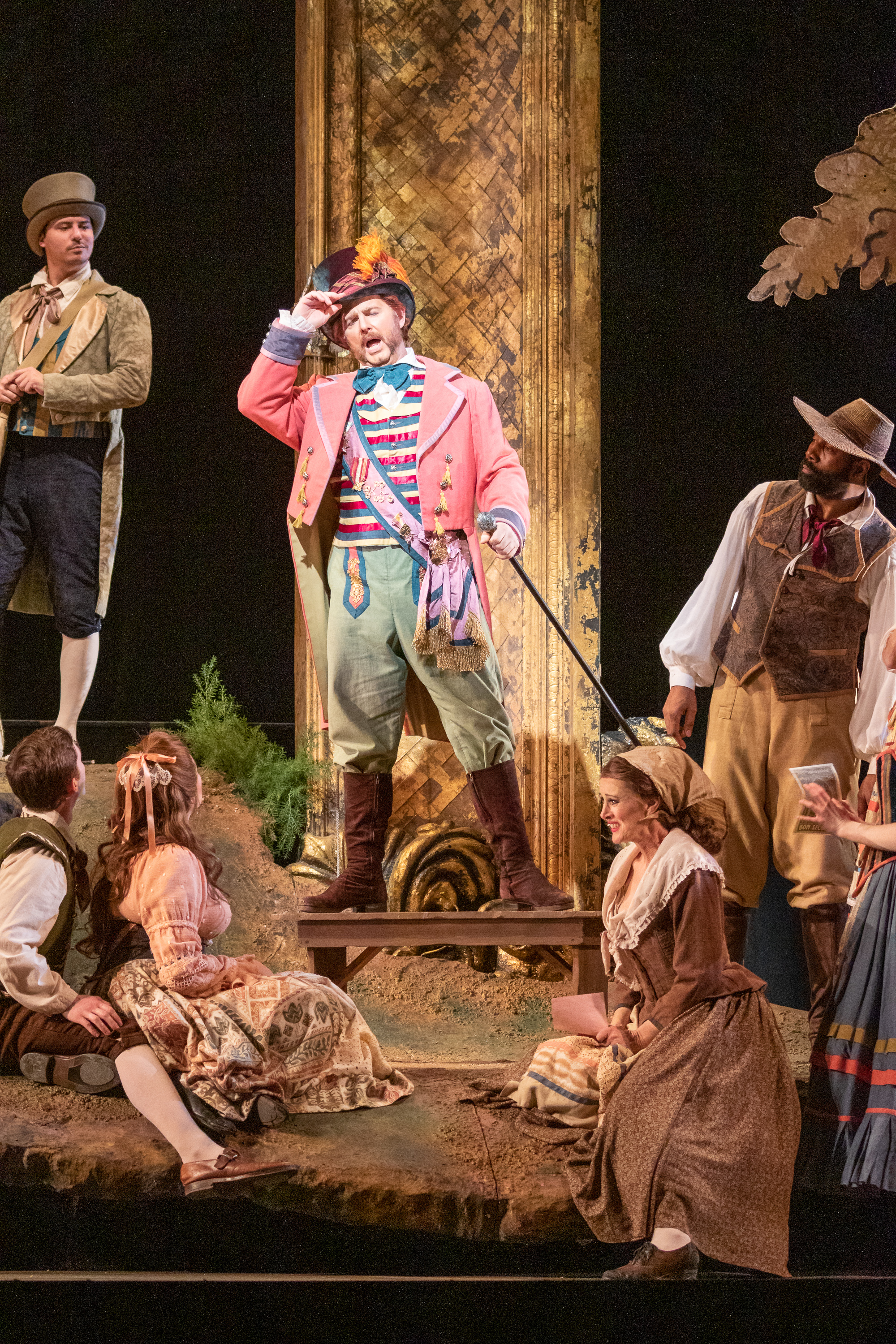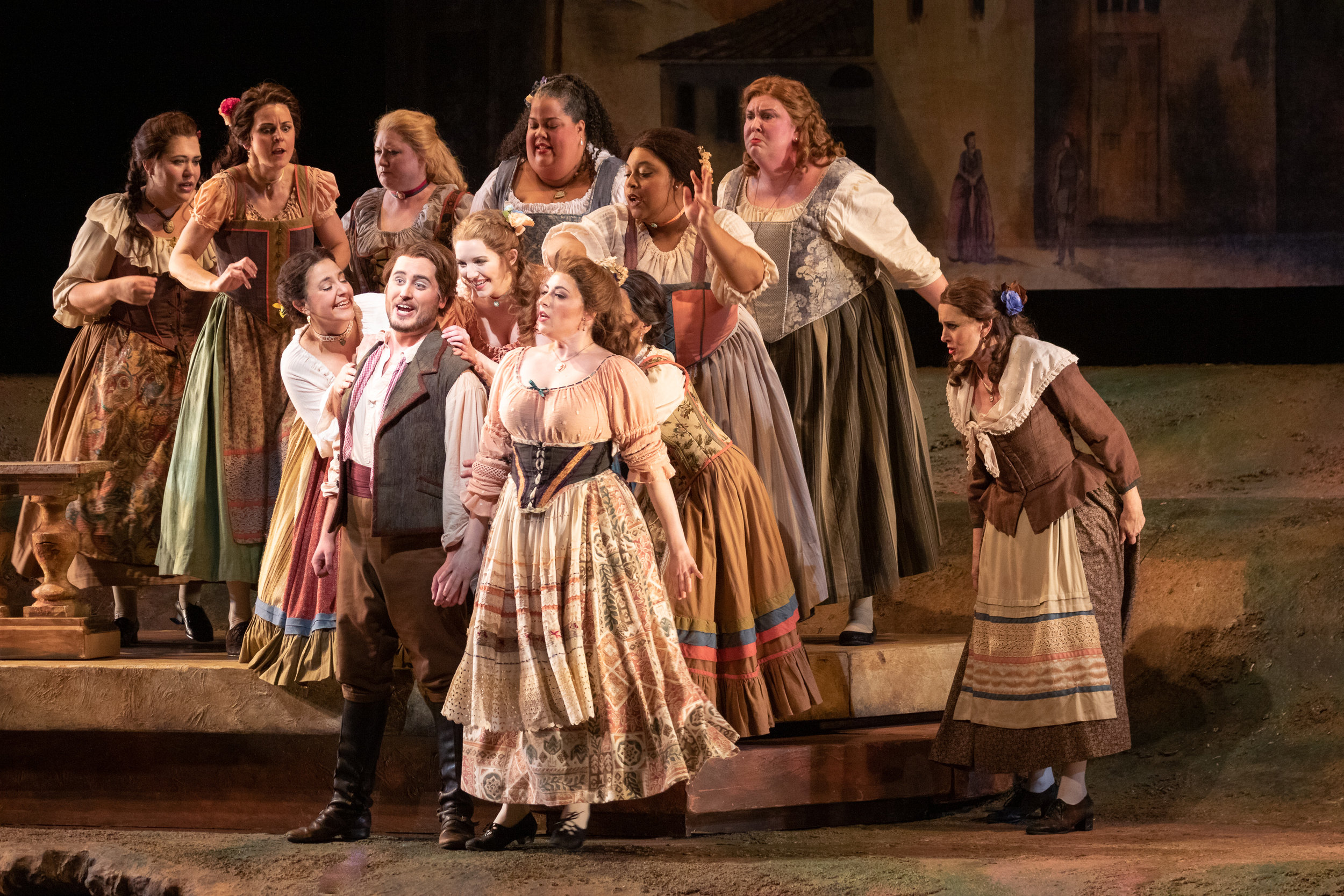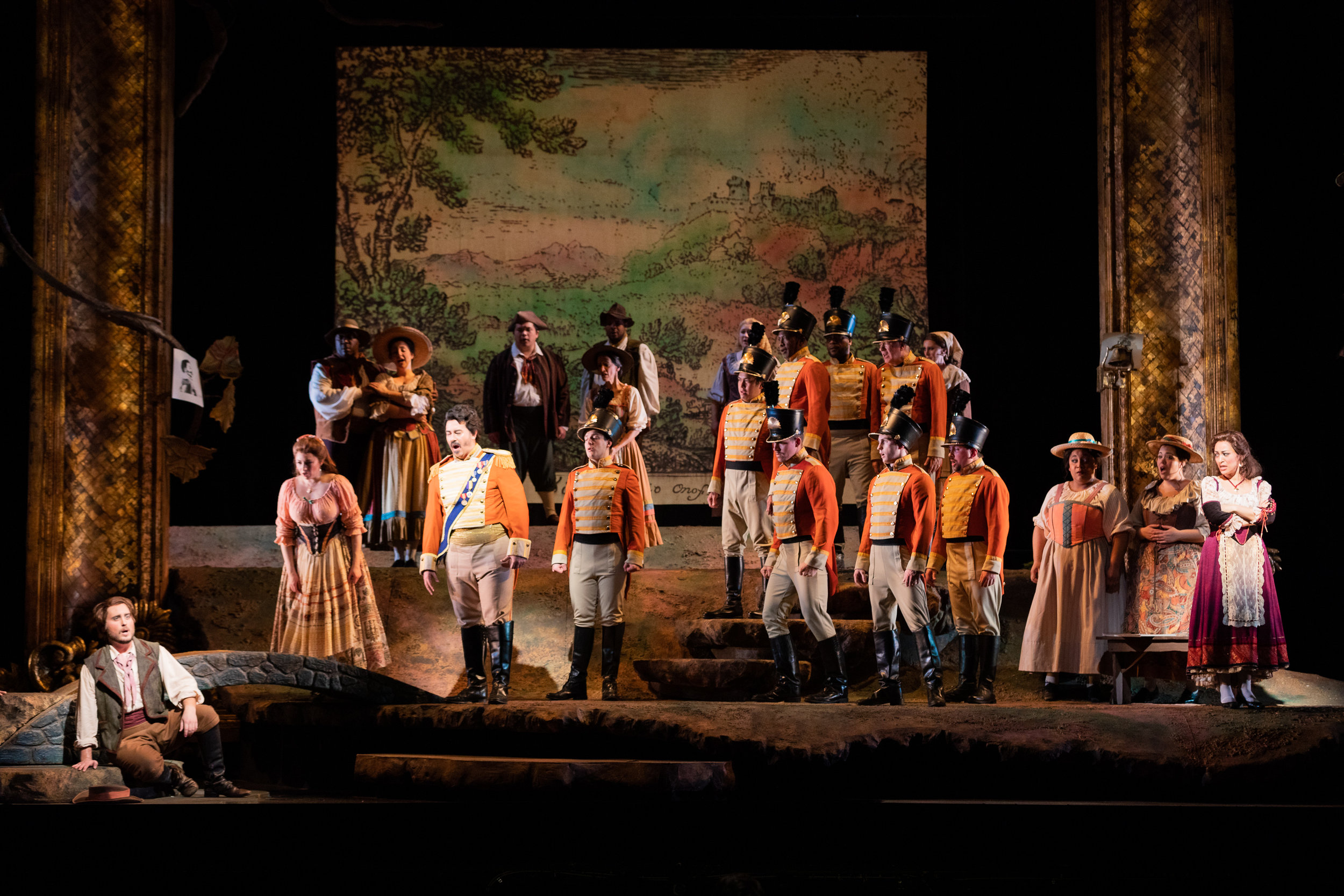As I sat in the audience Friday night enjoying the excerpts of Giacomo Puccini’s great operas being performed by the graduates of the Maryland Lyric Opera’s Young Artist Institute, I felt like I was home playing selections from my favorite operas being sung by great artists I have grown to love. But this was live, and more than live, the talent and professional quality were there. With MDLO’s emerging artists and some with more established careers, I didn’t have to lower my expectations. All I had to do was to enjoy, and two hours flew by like it was twenty minutes.
Yongxi Chen as Rodolfo and Youna Hartgraves as Mimi. Photo by Sam Trotman, Jr.; courtesy of Maryland Lyric Opera..
MDLO gave us excerpts from La Boheme, Madama Butterfly, Tosca, and an orchestral “Intermezzo” from Manon Lescaut. The concert began very strong with the Act I scene from La Boheme where Mimi arrives and she and Rodolfo fall in love. Conductor Louis Salemno introduced each group of excerpts preparing the audience with background commentary. Yongxi Chen played Rodolfo and Youna Hartgraves sang the role of Mimi. They are excellent choices for these roles. Mr. Chen has that gorgeous, steely clear tenor voice that we all love, and Dr. Hartgraves possesses a voice with both a velvety timbre and impressive power. They were supported by the superb Maryland Lyric Opera Orchestra led by Maestro Salemno. Together, they filled the concert hall with beautiful sound and emotion, as Mr. Puccini intended. Stage lighting, including colorful projections on the screen behind the orchestra were handled by Lighting Designer Joan Sullivan-Genthe.
SeungHyeon Baek as Sharpless and Marco Cammarota as Pinkerton. Photo by Sam Trotman, Jr.; courtesy of Maryland Lyric Opera..
The next excerpts were the opening scene from Madama Butterfly, followed by the Act three scene where Pinkerton and Sharpless arrive early to give Suzuki the news before Cio-Cio San awakens. Tenor Marco Cammarota sang Pinkerton. He has a strong pedigree as a recent graduate of the Academy of Vocal Arts and has a distinctive voice; there were a couple of spots where he was difficult to hear over the orchestra. He was also featured in the excerpt that closed Part I of the program singing “E lucevan le stelle” with feeling as Cavaradosi laments his fate. Veteran mezzo-soprano Catherine Martin made a fine Suzuki. I had forgotten she was one of the Rhine maidens in the DC Ring that I enjoyed so much. Mauricio Miranda gave us a pleasing Goro with a bright tenor voice in his brief appearance that made me interested in hearing more. For me, the standout in this crew was SeungHyeon Baek who played Sharpless; he possesses a strong, clear baritone voice. His voice is also powerful, and he sings with an ease enabled by an impressive legato, though that ease sometimes leads him to momentarily lose the tension in the character he is portraying. I have been similarly impressed with his previous performances with Maryland Lyric Opera.
Conductor Louis Salemno leading the MDLO Orchestra. Photo by Sam Trotman, Jr.; courtesy of Maryland Lyric Opera..
To begin Part 2 of the “Evening”, Conductor Salemno led the MDLO Orchestra in playing the beautiful “Intermezzo” from Puccini’s Manon Lescaut. I find it impressive that a small company can assemble a concert orchestra of this caliber and size. The rich sound from this 56-piece ensemble is very worthy of being enjoyed all on its own; I find the string section to be especially impressive. During the entire evening, Maestro Salemno was on point at leading the orchestra in supporting and not over powering the singers while at the same time providing a sound level sufficient to enjoy and be moved by Puccini’s music as well as the vocals; kudos also to Concertmaster José Miquel Cueto.
The final excerpt was again from La Boheme, from Act III, when Mimi seeks out Marcello for word about Rodolfo after they have separated. The lovely pairing of Hartgraves and Chen returned and was supplemented with Baek as Marcello and soprano Nayoung Ban as Musetta. I thought the ensemble section with all four singers in full voice was a highlight of the evening, and could, I suspect, have been heard in the stadium across the street. I add that I am also impressed that Ms. Hartgraves can provide such a strong portrayal of consumption with deep coughing and still manage to hit the high notes in the aria. This excerpt also included an amusing note at the beginning when Mimi wanders across the stage coughing and finding her way; as she passes Conductor Salemno, she sings to ask him the direction of the tavern, and he points the way to his right with gruff voice. These sort of unexpected moments that include the audience in the joke heighten interest and enjoyment.
Curtain call: l to r, SeungHyeon Baek, Yongxi Chen, Mauricio Miranda, Conductor Louis Salemno, Marco Cammarota, Catherine Martin, Nayoung Ban, and Youna Hartgraves. Photo by Dhanesh Mahtani; courtesy of Maryland Lyric Opera..
The first time I attended a Maryland Lyric Opera concert, it featured their young artists accompanied by only a piano, and I found it to be excellent Just a year or so later, they have added an impressive orchestra, led by a renown conductor, and have established a stable of former trainees to help stock their productions, which have very quickly expanded to include concert and fully-staged opera, as well as concerts and recitals. With the success of the Baltimore Concert Opera in Baltimore and the arrival of the fledgling Maryland Opera in Baltimore, opera appears to be a Phoenix rising in Maryland. Keep an eye on MDLO; if you are in suburban Maryland and want to have first-rate opera available locally, supporting Maryland Lyric Opera is an opportunity to be welcomed. I await their next season with anticipation.
The Fan Experience: The performance I saw was on Friday, 7:30 pm, June 7; a second performance was given on Sunday, 2 pm, June 9. The Kay Theater in the Clarice Smith Performing Arts Center at the University of Maryland is an excellent theater for opera viewing and hearing for fans. The small size may restrict what opera companies can do on stage, but the sound is great in every seat and so is the view. I sat in the middle of the orchestra seats for Part 1 and moved to the back of the balcony section for Part 2 as an experiment. Sitting in the orchestra section up close to the performers is a treat and there is some loss of stereophonic effect in the back of the balcony, but the volume in the balcony is great and the view of the orchestra, on stage for this performance, was better. The lighting on the stage was very well handled; however, the size of the surtitles providing the English translations of the lyrics did not serve the audience well from the orchestra section or the balcony.
Views of the MDLO Orchestra from the orchestra section (left) and the Balcony (right). Photos by author.
One downside for the beautiful Kay Theatre is getting there anywhere near rush hour, especially if you have to deal with the Beltway. It took me one hour and ten minutes on Friday to make the commute from Tysons Corner, about twice the non-rush hour time. If possible, I would move weekday start times back to 8 pm. When you do attend a performance, check the parking description on the Kay Theatre website, plenty of free parking in lots 1B and Z after 4 pm on weekdays and on Saturdays and Sundays, except during some sporting and other events.
I have a suggestion for MDLO to consider. There are many parts of Puccini operas that would be enjoyable to hear in a concert of excerpts. Give the audience a chance to influence what will be presented. Let us vote ahead of time among possible selections. I have no complaints with the great excerpts selected, but it would be fun to vote and might generate even more interest.





